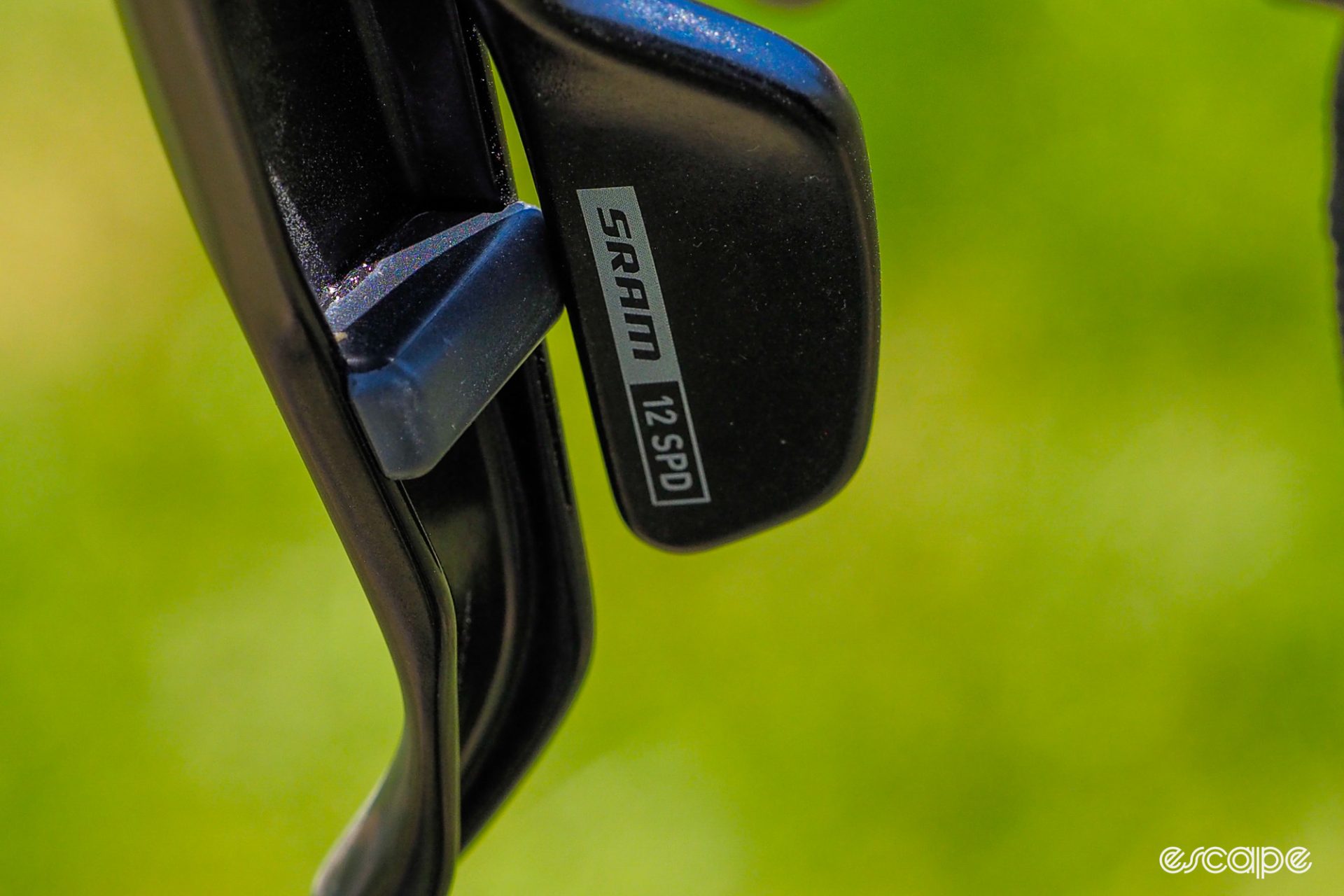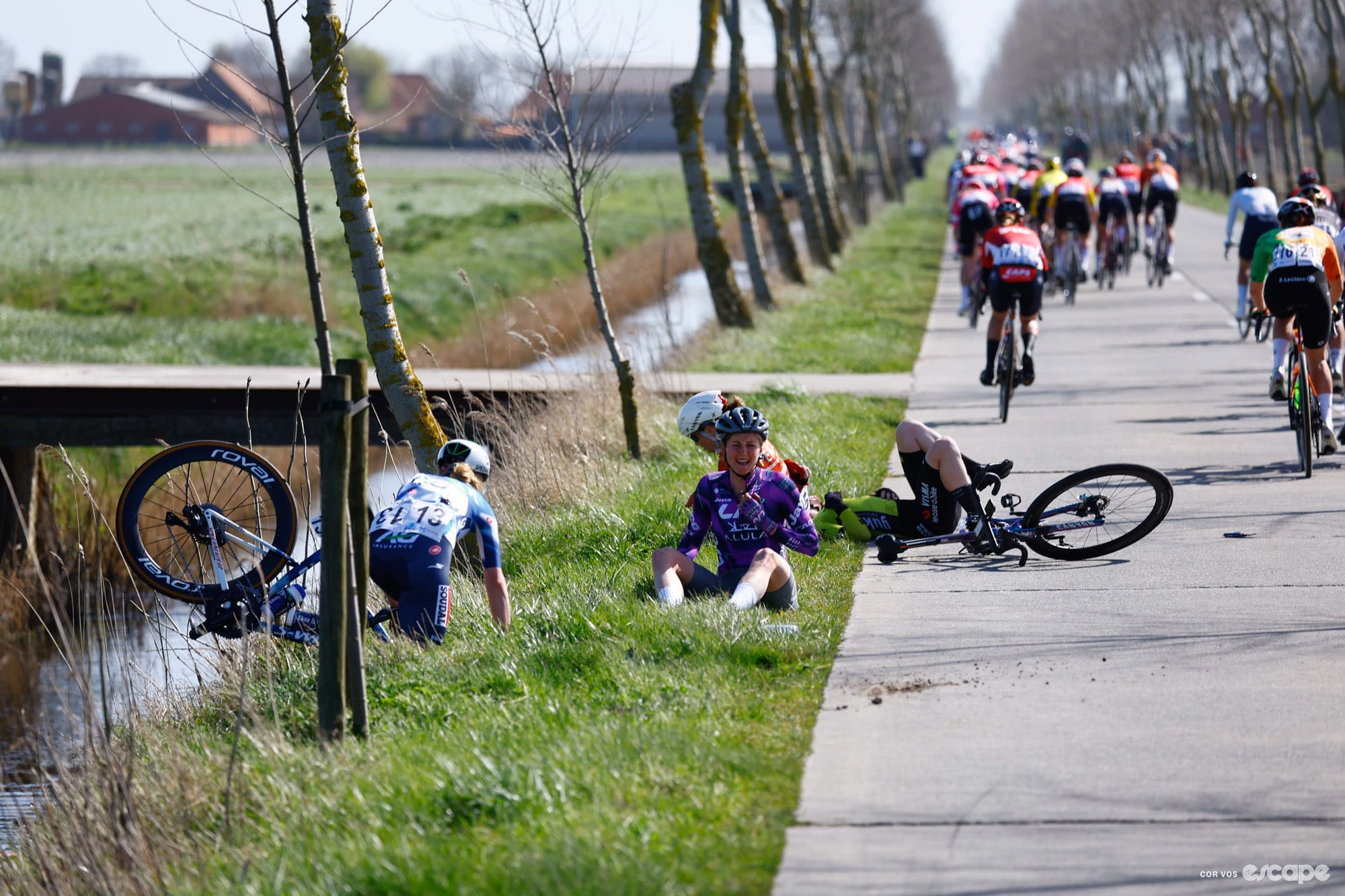SRAM today announced a wholesale revamp of its entry-level Apex groupset. It includes both AXS electronic and mechanical versions, and both drop-bar and flat-bar controls – all with 12-speed cassettes out back. There’s even an optional power meter.
But whichever way you go with the new Apex, there are no front derailleurs to be found. And while Apex has always been positioned as SRAM’s entry-level road offering, the new bits offer up a strong indication as to what kind of riding the company sees those riders doing these days, and what they deem important.
In SRAM's view, they want lots of gearing range, easy and intuitive shifting, consistent and reliable performance, options to suit a broad swath of users, and accessible pricing – but they’re also spending a lot less time on paved roads, and more time on gravel.
A focus on simplicity
I’ll get to the specifics about the electronic and mechanical bits shortly, but first it’s worth discussing SRAM’s approach on gearing here.
SRAM has actively been pushing the idea of a single-ring drivetrain for drop-bar bikes for nearly a decade now, and there are some sound reasons for the idea. As compared to a multi-ring drivetrain, a 1x setup is easier to understand and operate, lighter, less expensive, and more reliable. But when SRAM first introduced the idea back in 2015, there were too many limitations at the time to make it stick.
Given the 11-speed cassettes back then, you could have reasonably sized gear-to-gear jumps or sufficient range, but not both.
Two major changes – one technical and one conceptual – make the proposition far more viable this time around. First off, Apex moves to a 12-speed cassette format that gives SRAM more leeway with gear ratios. Second, since Apex is now focused on gravel instead of road, SRAM has decided that super-tight gaps aren’t as important as they used to be. The standard cassette will be an 11-44T, but riders that prioritize a lot of range can go with a so-called “mullet” setup built around an 11-50T mountain bike cassette.
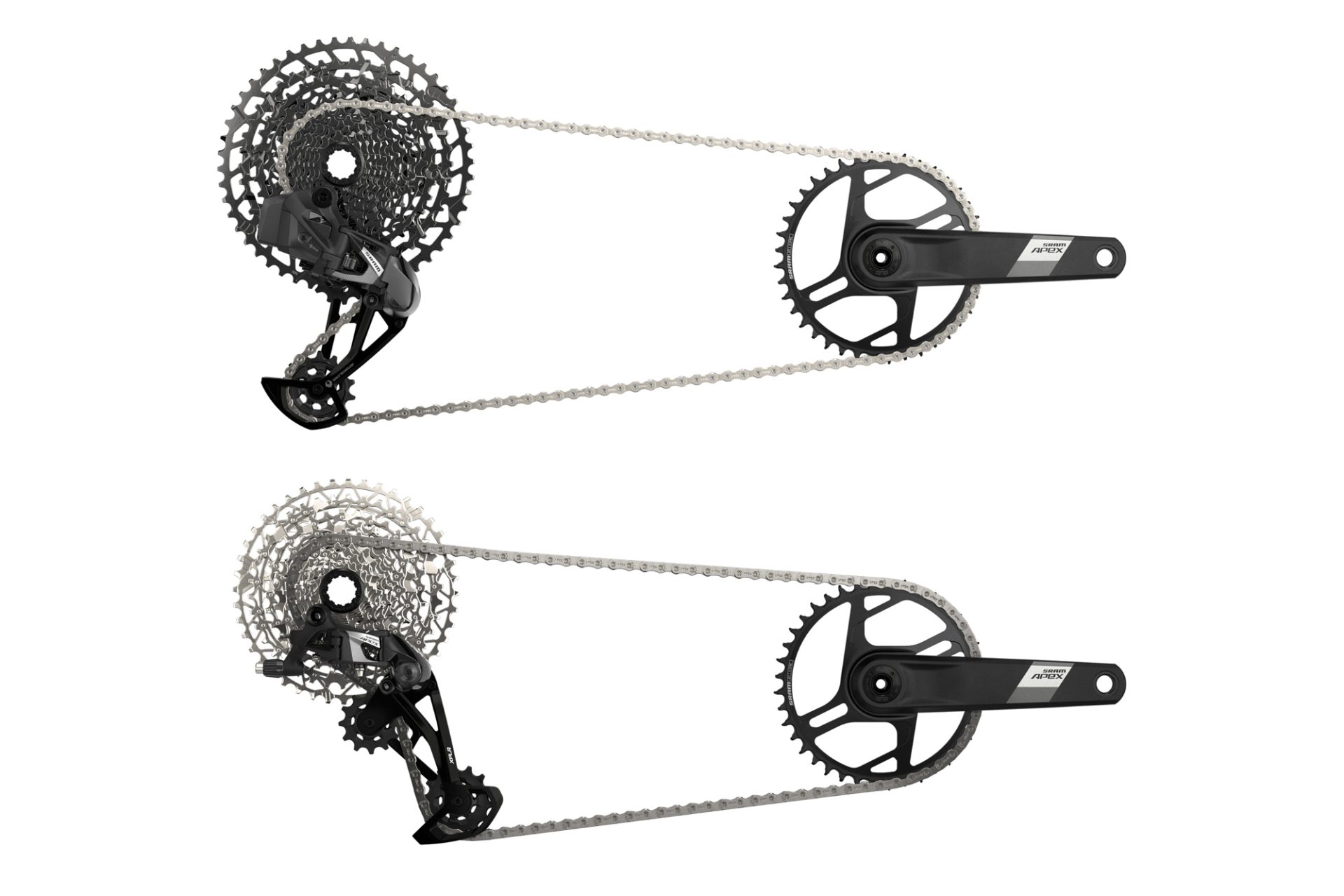
The Apex-level cassettes are designed to fit on the common Shimano HG freehub body standard, meaning they start with 11-tooth sprockets instead of the 10-tooth ones on higher-end SRAM stuff. That reduces the total range compared to nicer SRAM offerings, but it also reduces the cost of entry since HG freehub bodies cost less than the XD ones required for a 10T setup. At this end of the market, it’s ultra-important to keep prices low.
The cassettes themselves also feature a more traditional construction than what SRAM uses on its upper-end stuff, with stamped steel sprockets instead of fancier (and far more expensive) machined construction. The larger 11-50T cassette is the same PG-1230 model SRAM already uses on entry-level Eagle mountain bike drivetrains, with the largest four sprockets riveted to an aluminum spider while the rest slide on individually with spacers in between. The smaller 11-44T cassette is a new introduction and uses SRAM’s PinDome construction. All of those sprockets are also made of stamped steel, but they’re mechanically joined together around the circumferences with a series of press-fit steel pins.
SRAM has thankfully baked a healthy level of compatibility into the new Apex, too. Although Apex is built around an 11-tooth small sprocket, the sprocket-to-sprocket spacing is shared with other SRAM 12-speed products so it’s easy to swap a freehub body and use one of the higher-end options if you wanted either more range or less weight.
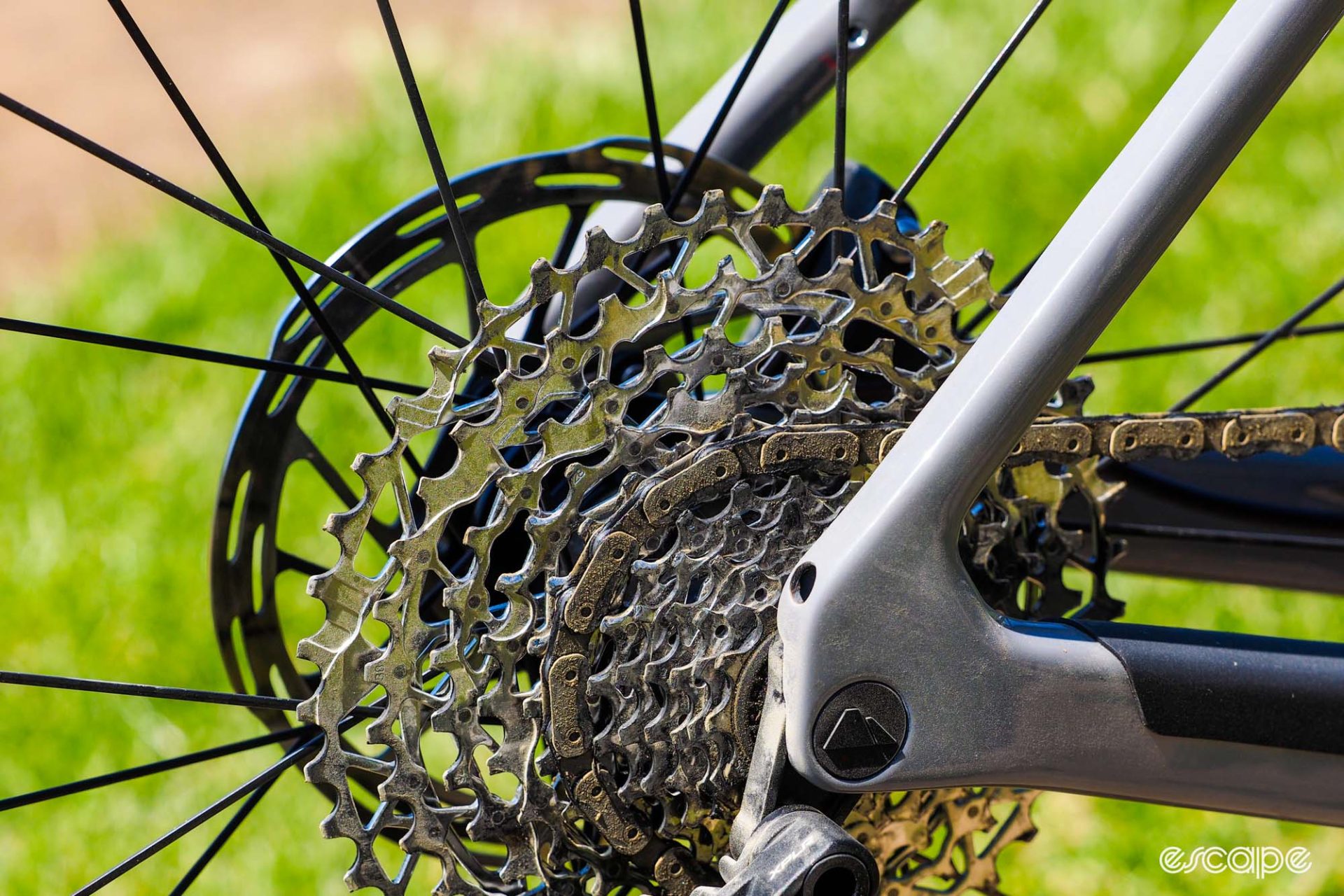
In other words, if you want to run a mullet drivetrain with a SRAM 10-50T or 10-52T cassette – and can use a rear hub with an XD driver body – have at it. Likewise, the standard Apex AXS or Apex mechanical rear derailleur will also work with SRAM’s 10-44T cassette, and the former is also officially compatible with SRAM’s 10-36T cassette. Neither are approved to work with the more road-specific 10-33T cluster, however, nor will any of the rear derailleurs work in conjunction with a front derailleur of any type.
It’s a similar story with the new Apex FlatTop chain, which is dimensionally identical to those used on other SRAM 12-speed road and gravel groupsets; mullet setups use SRAM’s Eagle chain design, which is shared with other 12-speed SRAM mountain bike drivetrains.
Up front, the chainrings will be offered solely in a direct-mount format, attaching to the aluminum crankarms with SRAM's latest eight-bolt interface. OEM brands will have access to the full range of chainring sizes, from 38-46T, in two-tooth increments. And whereas all of those rings will be offered in aluminum, OEM product managers will also have the option of a 40T ring made of steel. All of the aluminum sizes will be offered aftermarket as well, but aftermarket crankset will only be available with 40T or 42T aluminum rings. All OEM and aftermarket cranks will be offered in the full range of lengths, however, and in 160, 165, 170, 172.5, and 175 mm lengths.
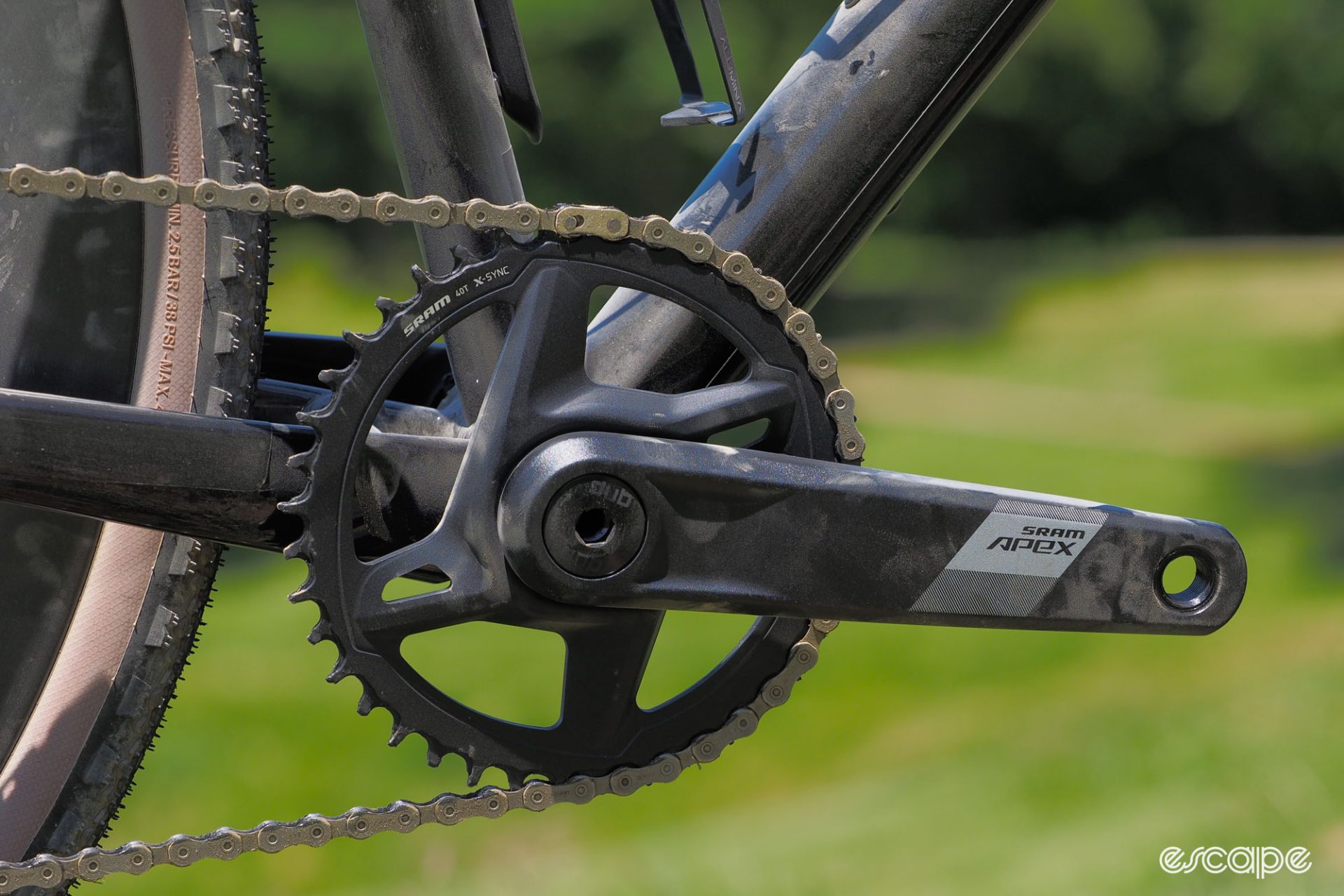
Given the gravel focus for Apex, SRAM has opted to use the company’s “Wide” 47.5 mm chainline exclusively to maximize tire and drivetrain clearance. It’s safe to say most entry-level riders aren’t going to be all that concerned with narrowing up their Q-factors.
AXS for the people
Ok, so let’s get into the two groupset variants themselves.
Perhaps the biggest – and least surprising – news is that SRAM has brought its popular AXS wireless electronic shifting system down to the Apex level. And because Apex AXS is built with the same electronic guts as Rival, Force, and Red, there are the same features and benefits, and essentially identical shifting performance.
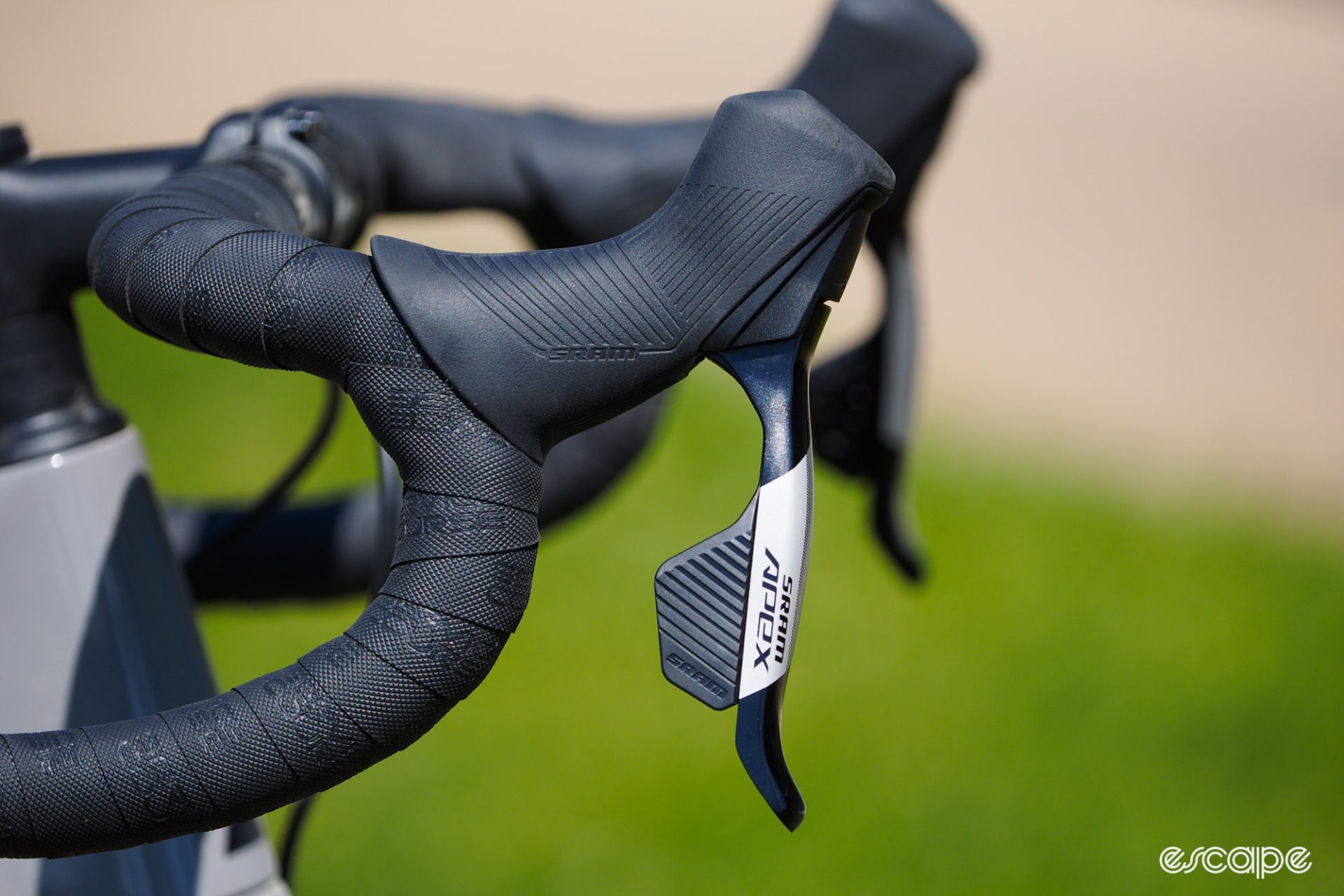
Most important is the continued use of SRAM’s excellent eTap shifter actuation, which could hardly be more intuitive: just push the right-hand shift button for a harder gear, and the left-hand one for an easier one. The new levers feature the same lower profile and more compact dimensions SRAM first introduced on Rival AXS (and then the second-generation Force AXS). It looks better than the first-generation AXS stuff, but the slimmer body should also work with a wider range of hand sizes than SRAM’s first-generation AXS stuff, and there’s also more room underneath to wrap your fingers around for a surer hold. As before, lever reach is easily adjustable.
The levers are otherwise more similar to Rival AXS than they are different.
Just like Rival AXS, the lever body is made of fiber-reinforced plastic and the lever blade is aluminum, but whereas Rival AXS used a forged blade, the Apex AXS one is stamped. Apex also gets its own texture for the rubber hoods, although they appear to be otherwise compatible. There are no expansion ports for wired accessories, but that’s just fine since they’re not necessary. Wireless accessory compatibility is baked right in, and the new Apex AXS levers can pair with up to six Blip remote buttons should you decide to add them. As with other AXS groupsets, you can also program those buttons as needed for customized shifting or to control other AXS components (such as a RockShox Reverb AXS dropper seatpost).
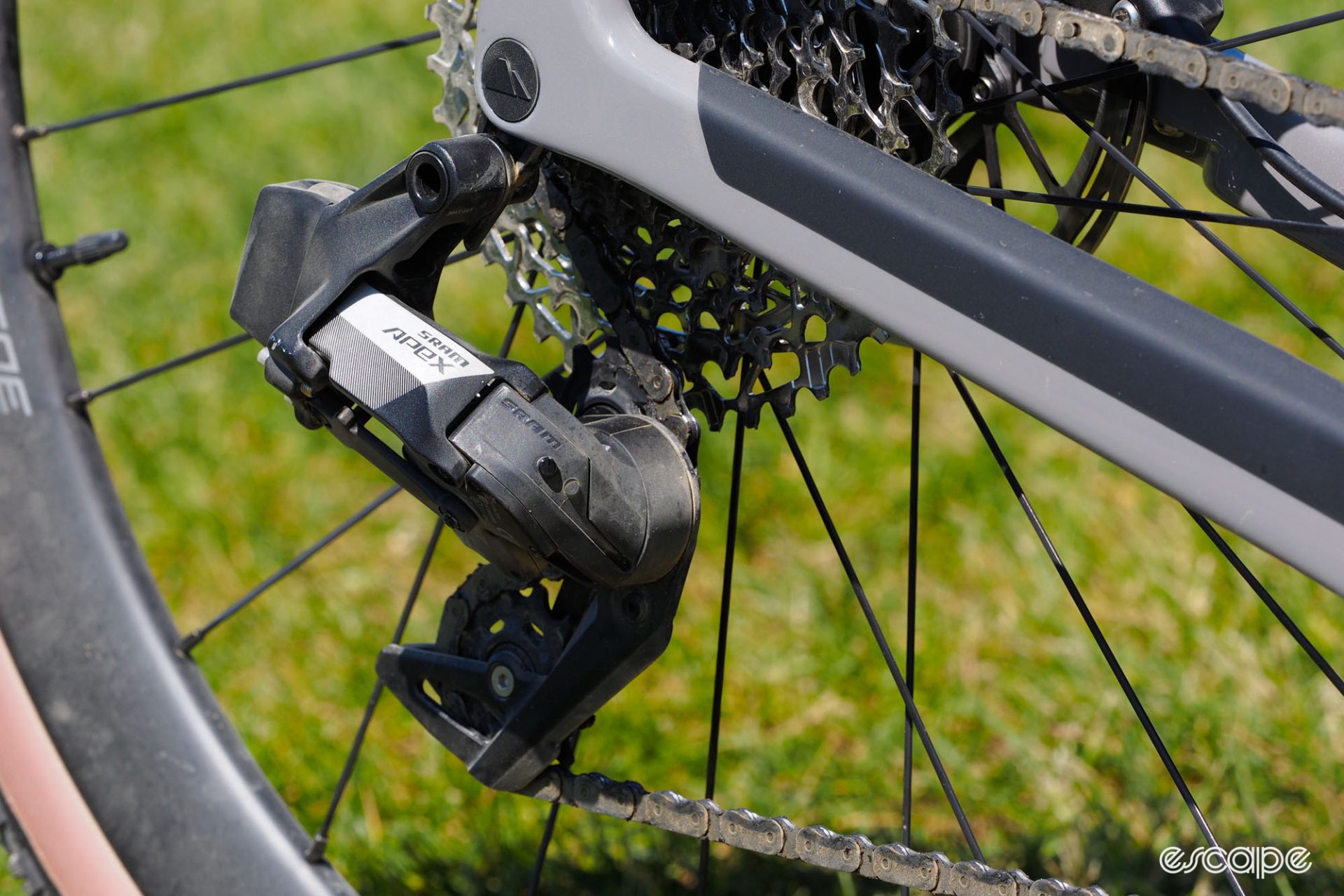
Those levers are paired to one of two different rear derailleurs. One mimics the geometry of Rival XPLR AXS, using a traditional slant parallelogram layout. There are a variety of material substitutions and changes in appearance to reduce cost, though, such as stamped aluminum parts instead of forged ones, bushings in the pulleys instead of bearings, and a more basic painted finish. The other derailleur is essentially a slightly modified GX Eagle AXS model with a more horizontal linkage setup, a longer cage, and different pulley wheels than the XPLR version.
Both utilize spring-type pulley cage clutches to prevent the chain from derailing while riding on rough terrain, as opposed to the lighter hydraulic fluid dampers used on Force AXS and Red AXS.
Both rear derailleurs also use the same interchangeable rechargeable batteries as other AXS derailleurs, and SRAM says that “firmware updates have improved battery life across all AXS systems” above and beyond the original 20-hour claimed run time. The Apex AXS levers use CR2032 coin-cell batteries, with a claimed lifespan of about two years.
SRAM goes 12-speed with mechanical
No longer content to let the likes of third-party outfits like Ratio Technology eat its lunch with aftermarket 12-speed upgrade kits, SRAM now finally has a 12-speed mechanical drivetrain of its own – and unlike those converted levers that just swap the 11-speed ratchet ring with a 12-speed one, the new SRAM Apex mechanical levers are entirely new.
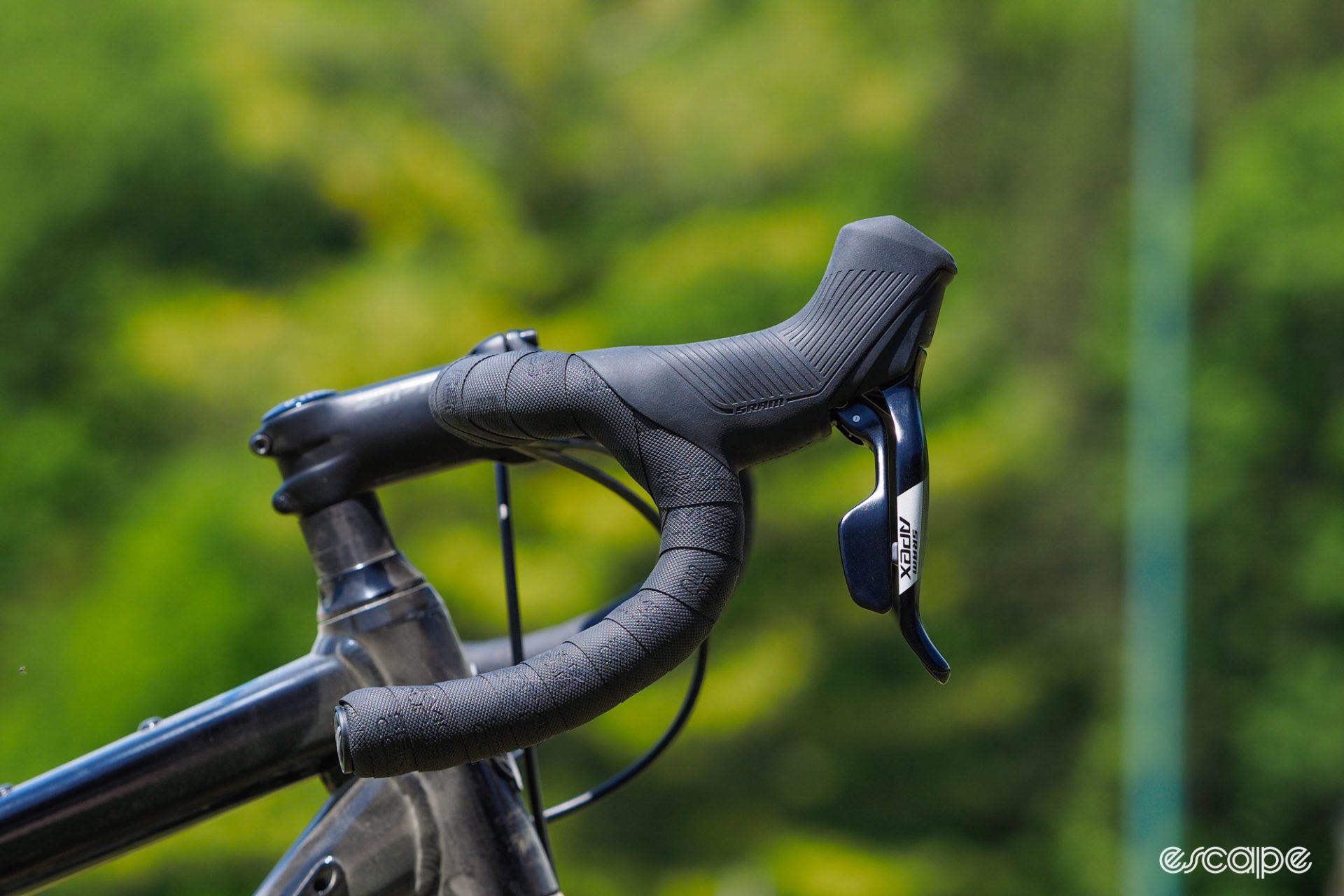
The levers themselves sport an all-new shape that’s unique from the AXS version. They're necessarily bigger and chunkier than the AXS version since there's more hardware to tuck inside, and the lever bodies aren't as tapered in shape, either. The upper surface is also about 6 mm longer than the AXS version, and while the the peak up front is similar, the section where your hands rest is longer and flatter, and with an even smoother transition to the bar.
The single shifter paddle on the right-hand controls uses SRAM’s long-standing DoubleTap shift actuation, with a single shorter push initiating an upshift to a harder gear, and a longer push (past that first click) delivering up to three downshifts per swing. SRAM’s Zero Loss feature has again been included to minimize the amount of free movement before the lever engages the ratchet ring.
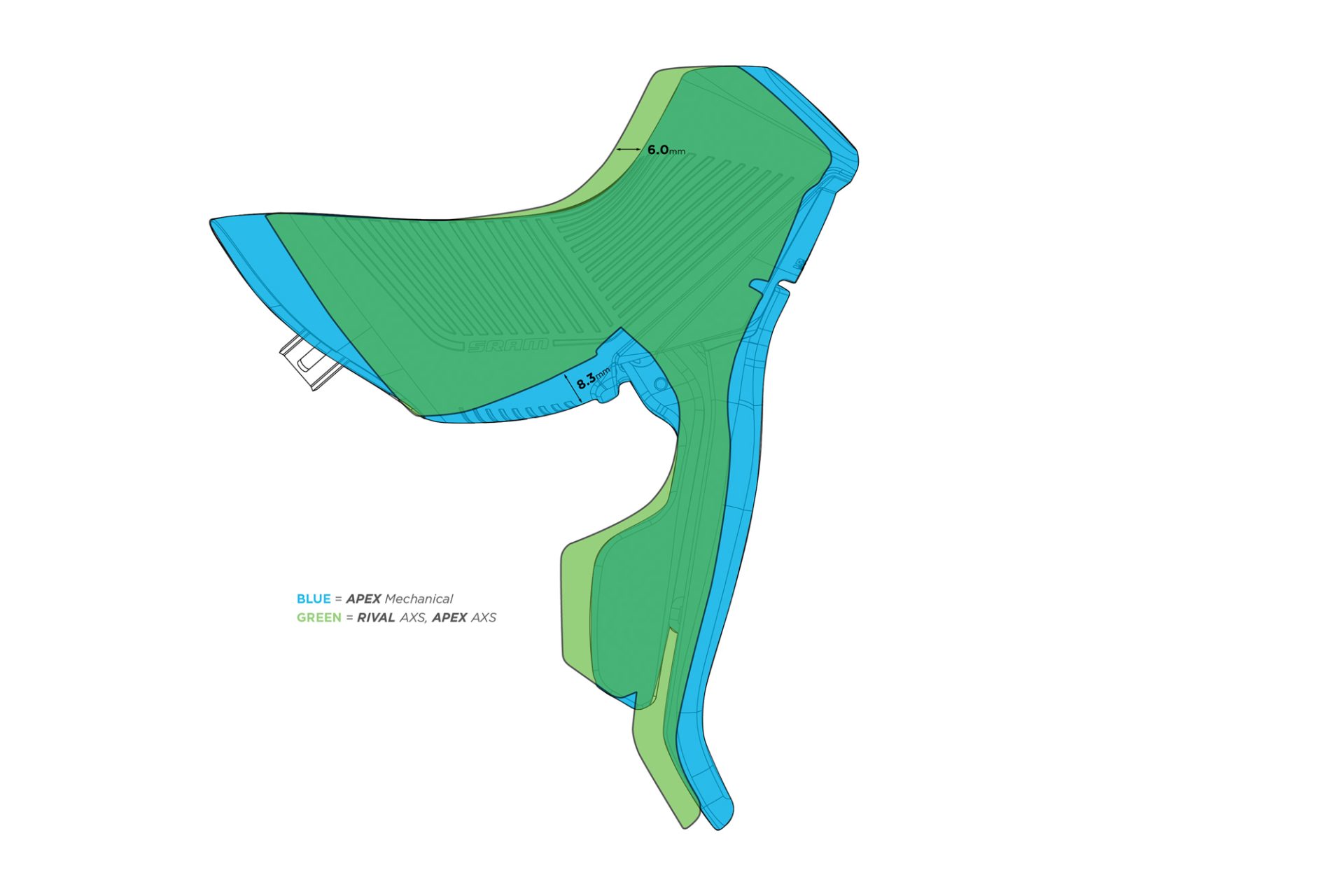
The brake hydraulics have been upgraded, too, with guts borrowed from newer AXS levers for a shorter lever throw.
The left-hand lever features the same shape upgrades, but with no shifter guts inside the body since Apex is now 1x-only. That said, there’s unfortunately also no option for some sort of dropper-compatible lever using a vestigial shifter paddle like what you can currently do with older DoubleTap controls.
Apex mechanical also includes two different rear derailleur options, although whereas the two AXS variants are quite obviously different from each, the two mechanical ones are essentially identical aside from the chain-specific pulley wheels (the claimed weights are even identical) and different cable fins. Both are very much MTB-inspired with their more horizontally oriented parallelogram linkages and big offsets between the upper pulley axle and pulley cage pivot to control the chain gap across the cassette range.
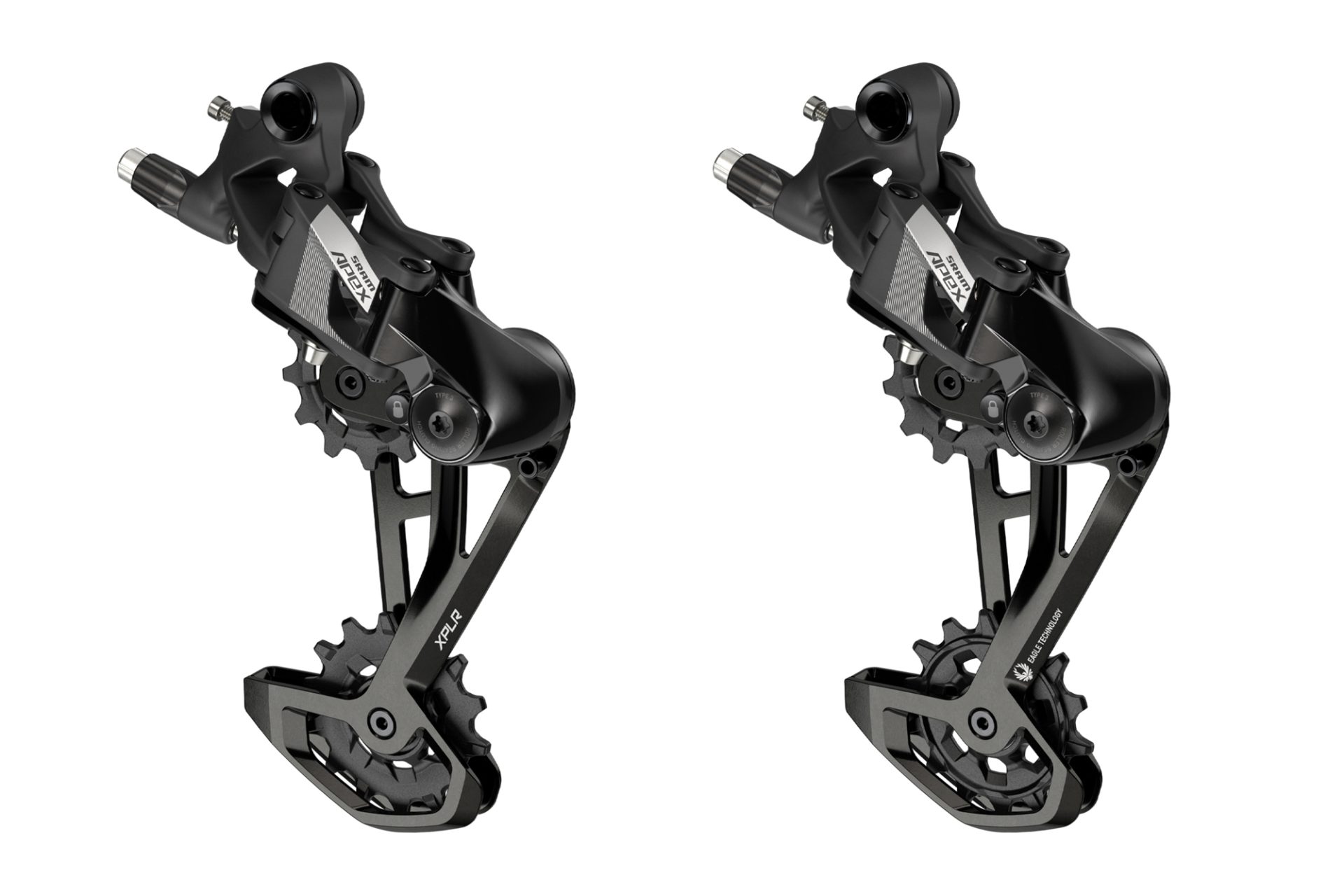
Barrel adjusters are built into both rear derailleurs, and both incorporate mechanical pulley cage clutches to boost chain security. The cable pull geometry is the same as SRAM’s 12-speed Eagle mountain bike rear derailleurs, too, so there’s room to mix-and-match if you’re so inclined.
Mildly updated hydraulic brake calipers and an inexpensive power meter option
While there are Apex mechanical shifters included in this redesign, there’s no option for cable-actuated brakes; it’s hydraulic or nothing now.

The two-piece calipers are offered in flat-mount configuration only, and the external shape is essentially shared with Rival AXS. However, SRAM says that simpler production tooling results in less intricate internal porting than some of the higher-end options. More careful bleeding is required as a result – it's the same procedure as the older Hydro R brakes – and there’s also no Bleeding Edge attachment interface to speed up the process.
The pads are the same as what SRAM uses on other road AXS calipers, however, and the whole system continues to use DOT fluid instead of the mineral oil favored by some competitors.

Should you want it, there’s also an optional power meter – the same as what SRAM first introduced with Rival AXS. It lives inside the DUB aluminum bottom bracket spindle, and it’s powered by a conventional AAA battery. Like most other lower-priced power meters, it technically only measures power from your left leg and then doubles that number for the final figure on your computer, but on the bright side, it’s quite inexpensive, SRAM says it only adds about 40 g, and the claimed run time is a whopping 400 hours (when using a lithium AAA battery).
Flat bar, too
SRAM apparently sees flat-bar gravel bikes as having some staying power as there are new Apex components to suit that category, too. Apex AXS versions match either rear derailleur with any of the current Eagle AXS wireless mountain bike shifters, while Apex mechanical uses the current cable-actuated Eagle mechanical shifters (since the cable pull ratio is identical).
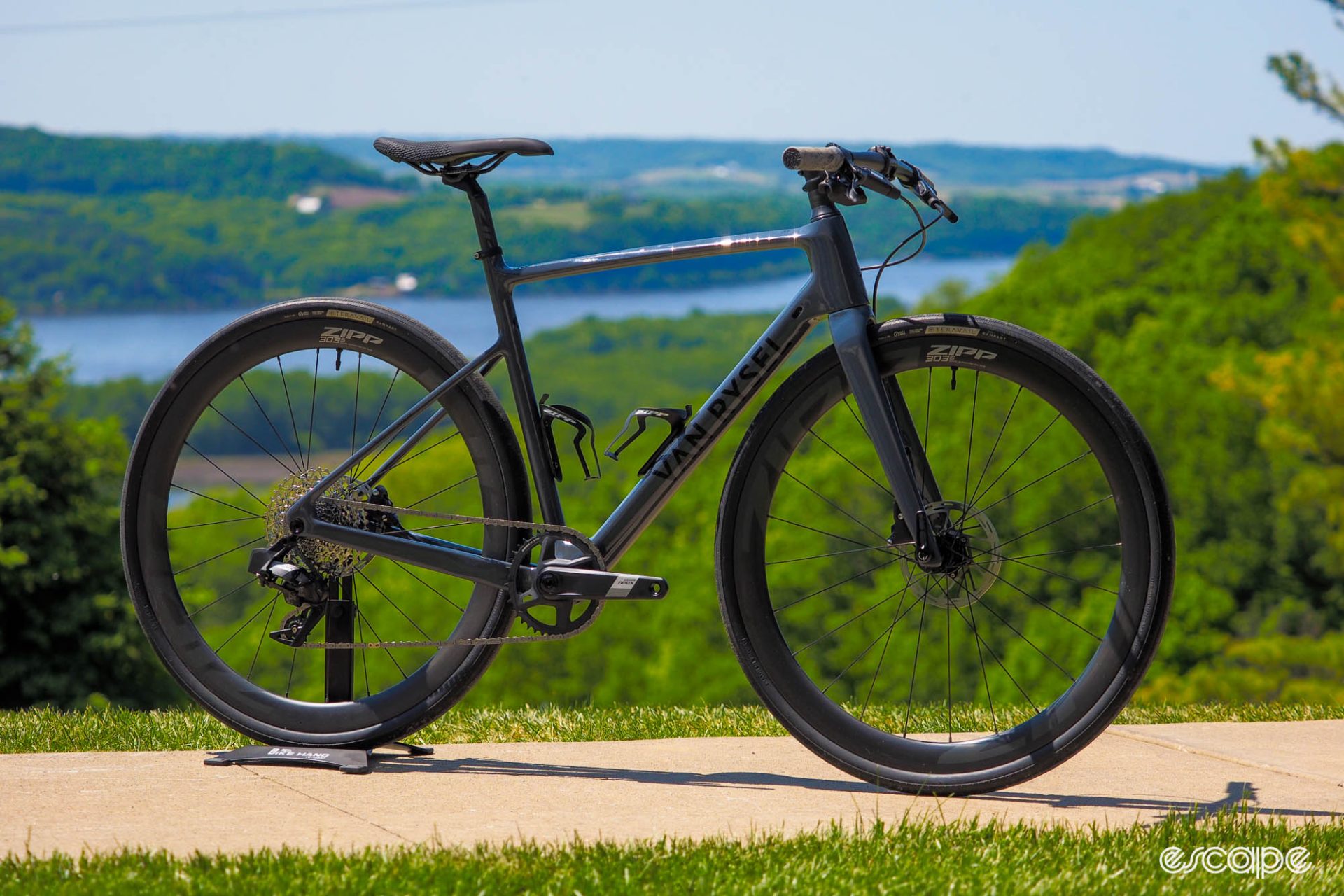
For brakes, there’s a new non-series S-300 hydraulic disc brake, which pairs the Apex caliper with a flat-bar lever that’s built with the same piston, seals, reservoir, and bladder bits as SRAM’s Guide MTB range. Not surprisingly given the modest price point, it’s a fairly basic lever design with a non-hinged aluminum body (meaning you have to remove the grips for installation or removal), an aluminum lever blade, and non-adjustable bite point (although lever reach is adjustable).
It’s heavy, but does anyone really care?
Wondering what all of the new Apex stuff weighs? Of course you are.
As compared to an equivalent Rival XPLR AXS setup, a complete Apex AXS setup will be about 100 g heavier – not a huge jump by any means, although it’s perhaps worth mentioning that Rival AXS is already no featherweight. That said – and at least as far as the AXS version is concerned – most people don’t seem all that concerned when compared to the shifting performance you get out of electronic, and SRAM’s decision to only offer Apex in a 1x format will lessen the sting on the scale.
According to SRAM, a complete Apex XPLR AXS groupset (without bottom bracket cups) weighs 2,900 g, while an Apex Eagle AXS groupset is a fair bit heavier at 3,191 g (mostly due to the much larger cassette).
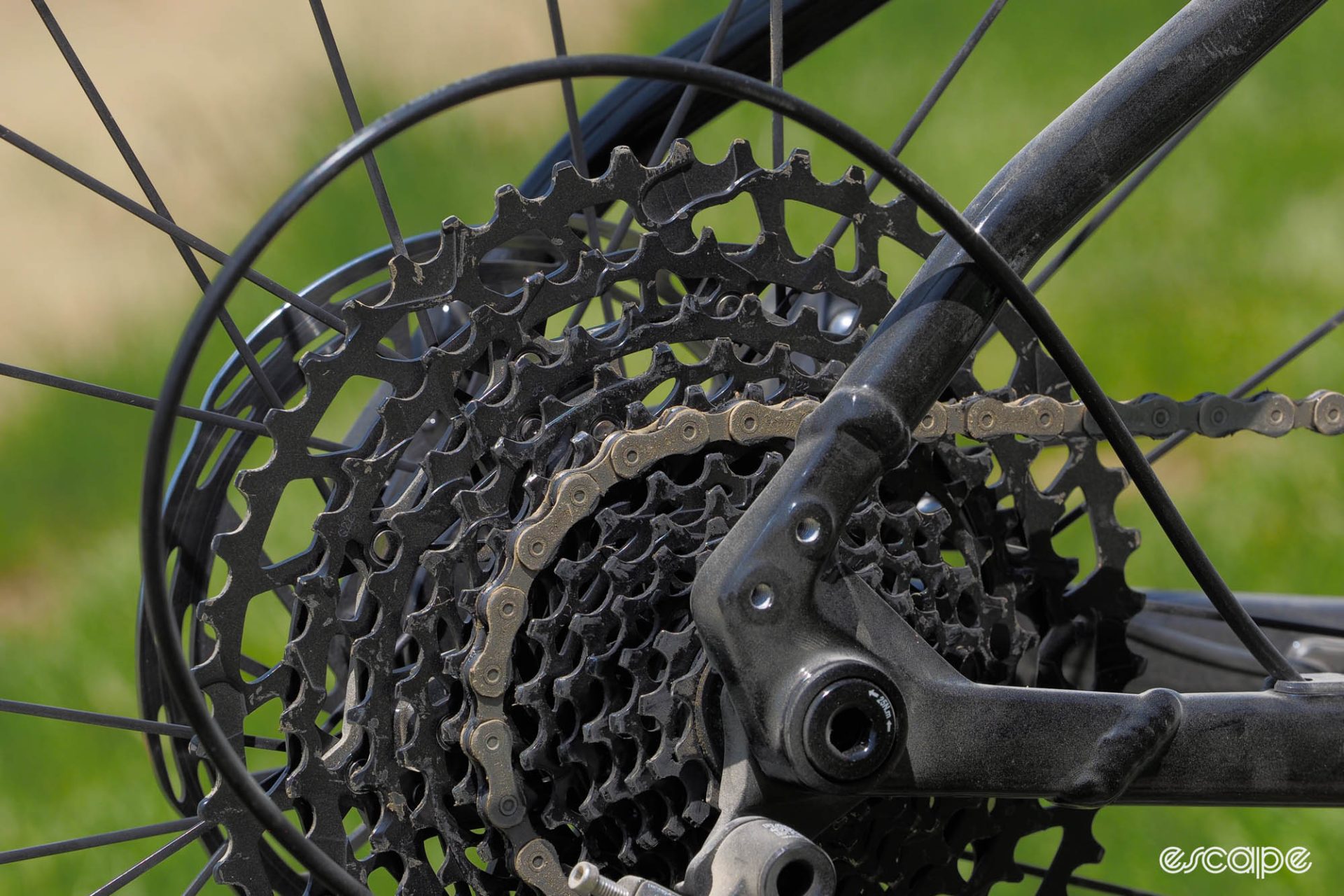
Is that light? Hardly, although it’s debatable how much people care as compared to the benefits. I posted the question of electronic groupset weight to our Escape Collective members-exclusive Discord channel the other day, in fact, and the responses for surprisingly one-sided. Here are a few of the replies as examples:
“It’s all about the shifting for me. A couple grams here or there don’t make a difference to me compared to how good the shifting is.”
“I didn't care about weight when I switched from Force 1 to Rival AXS. The improved quality of shifting, ease of shifting, and improved hood ergonomics were most important to me.”
“I’ve not even considered weight. For me it’s been just a much more enjoyable experience. My hands feel better over long rougher rides since it’s just a simple button tap. Not having to constantly deal with cable wear is nice. My wife has loved it because it’s a lot less for her to think about and handle swinging levers due to smaller hands.”
“I don’t consider weight at all, but that might specific to my bike. I care a lot – probably too much – about my ride being dialed and not distracting me from the ride experience, and electronic is great for that vs. mechanical. Set and forget, precise shifts every time, and way less variables for troubleshooting if something is a bit off suddenly.”
Interestingly, the claimed weights for the mechanical Apex versions aren’t much lower than the AXS stuff. A complete Apex XPLR mechanical groupset is said to weigh 2,882 g (again, without bottom bracket cups) while the Apex Eagle mechanical version is 3,072 g.
As for the individual component weights, here’s the full rundown:

Pricing and availability
Proponents of electronic shifting will undoubtedly be excited to see the retail pricing of SRAM’s new Apex AXS stuff, as it certainly brings the technology down to previously unseen levels. Part of this is likely due to Apex AXS only being offered in a 1x configuration (meaning there are fewer electronic components involved), but even so, the US$1,195 / AU$2,054 / £1,227 / €1,371 asking price for a complete Apex XPLR AXS groupset (with brakes and rotors) is pretty impressive. The Eagle AXS version is only about US$100 / AU$170 / £80 / €90 more.
Mechanical versions are less expensive, of course, although the differences are more modest than I’d expected. A complete Apex XPLR mechanical groupset is US$947 / AU$1,626 / £1,015 / €1,126 while the Apex Eagle mechanical groupset is US$931 / AU$1,599 / £990 / €1,099. Upgrading any of the groupsets with a power meter adds another US$220 / AU$380 / £205 / €230.
That all said, SRAM expects the vast majority of Apex components won’t be purchased on their own, but instead fitted OEM to complete bikes ranging around US$2,500 to US$4,000 or so for Apex AXS, and starting closer to US$2,000 for Apex mechanical. Apex AXS-equipped bikes should be available in stores by the time you read this, with aftermarket availability to follow shortly thereafter. Apex mechanical bikes and parts are slated for this September.
If you’re still curious about the aftermarket prices, the full price breakdowns are in the gallery below.
First ride review
Ok, so with all of that out of the way, it’s time for the important part: how well does all of this stuff actually work? Quite well, actually, although I should preface all of this by saying these are just first impressions given I only have a single ride logged on each variant: one on Apex XPLR AXS, the other on Apex Eagle mechanical.
Summarizing my initial opinion of Apex XPLR AXS is easy: shift performance is entirely identical to that of Rival AXS (or Force AXS or Red AXS, for that matter) – such is the beauty of how electronic shifting democratizes this sort of thing. Shifts are literally as easy as pushing a button, and the chain movement is reliably consistent and reasonably smooth. For newer riders, it’ll likely be a revelation (and I don’t use those words lightly).
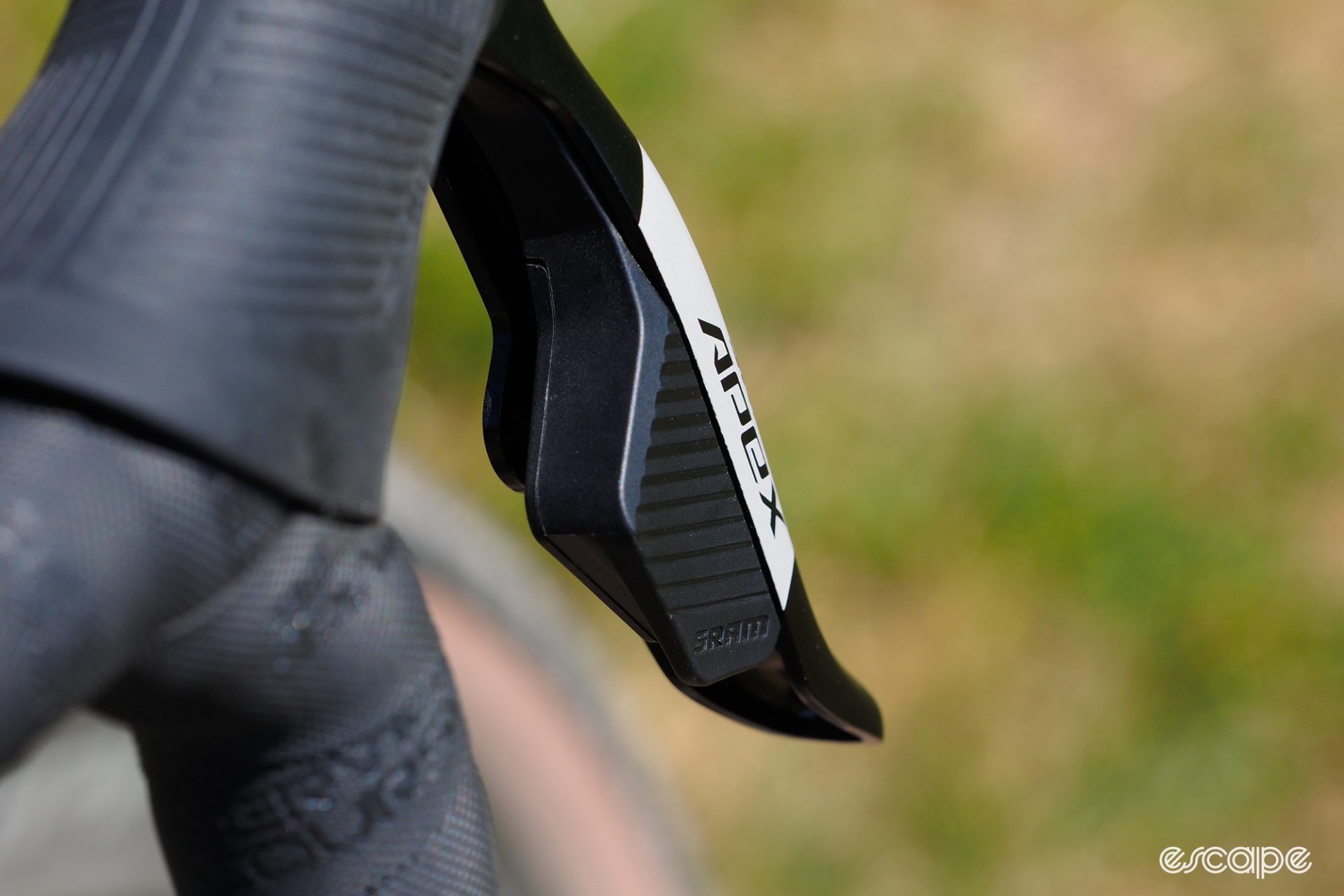
Just as I’d found with Rival AXS (and second-generation Force AXS), the new lever shape is a big improvement over SRAM’s earlier electronic/hydraulic stuff, with an elegantly tapered body that just feels better in your hands, and plenty of lever adjustment to accommodate various hand sizes, too. The generously sized shift paddle is also easy to access from either the hoods or the drops (no pun intended), and it’s certainly nice to have remote shift buttons up on the tops (although I’m still disappointed these are disposable items given the non-replaceable batteries).
Was that extra 100 g or so noticeable compared to Rival AXS? Well, no, particularly given I wasn’t able to do a back-to-back test with an otherwise identically equipped machine. But that said, 100 g isn’t all that much, and as many have already opined, my suspicion is SRAM is correct in assuming the vast majority of the target market will more likely be wowed by the shifting performance than disappointed in the ho-hum weight.
As good as the AXS stuff was, though, I was arguably more impressed with the updated mechanical Apex bits. My personal gravel bike uses a Ratio-converted SRAM Red 22 lever, and it was interesting to note how different the two felt. The Ratio setup undoubtedly works, but the lever action is still fairly stiff and the adjustment is a touch finicky to get the indexing just right. In comparison, the new Apex mechanical lever has a lighter feel and seems more tolerant of slight changes in cable tension. The new Apex mechanical shifter is also quieter than other DoubleTap levers I’ve used in the past (although there also seems to be a touch less tactile feedback than before, too).
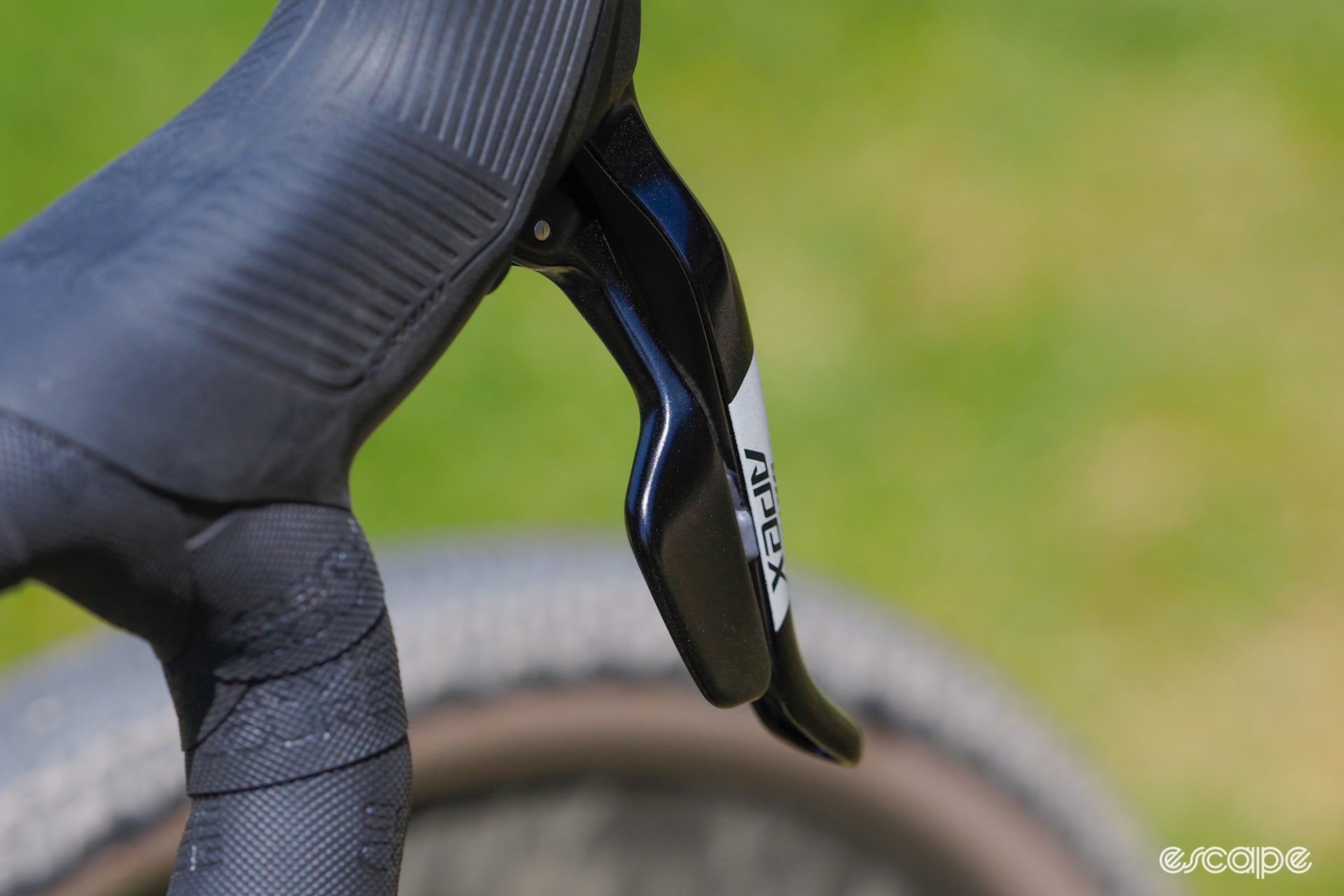
SRAM product manager Brad Menna explained to me that these differences are likely due to the updated Eagle-based leverage ratio, along with how the shifter guts are tucked up deeper inside the body than the previous design.
Even better was the revised mechanical lever shape. That slightly longer and flatter body provides a much more comfortable perch for your palms than any previous SRAM mechanical drop-bar lever, but the difference isn’t so dramatic that you’d need to change your stem length.
But as good as the shifting performance was in general, I did at times find myself missing the 10T sprocket of the nicer AXS groupsets. That wouldn’t be a big deal were there still a 2x option, but cassette range is even more important with 1x, and while a single tooth doesn’t sound like much, it’s a lot more significant when you look at it in terms of percentages. Newer riders might not care too much, but for more seasoned cyclists looking to get a 1x12 setup on a budget, I’d strongly recommend spending the extra for one of the nicer cassettes.
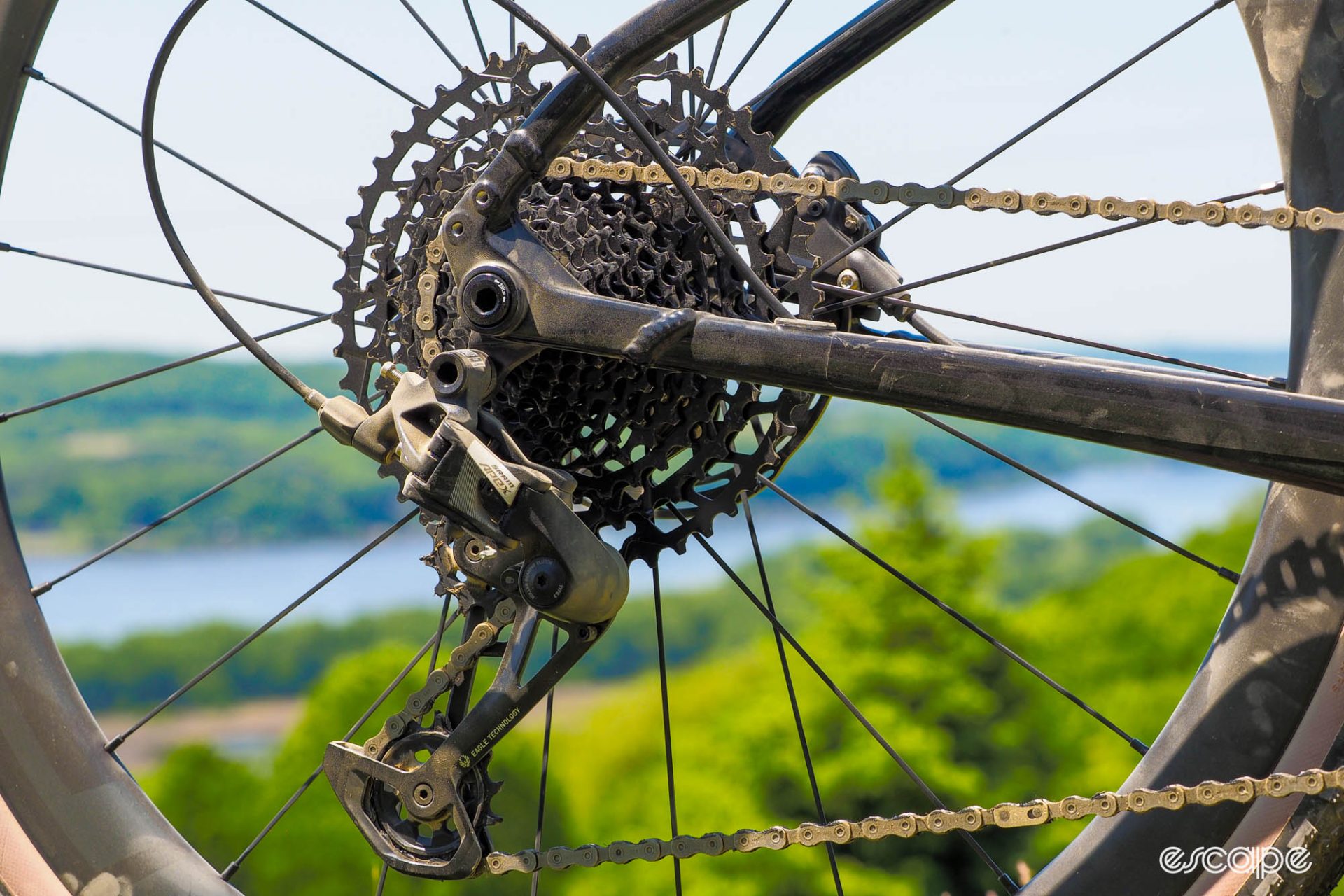
Unfortunately, the brakes didn’t leave quite as positive an impression. They admittedly work very well, offering excellent power and control, and at least in dry conditions, they run quietly. SRAM has also reduced the amount of lever travel before the pistons engage relative to older HRD-generation hydraulic brake levers. However, the lever action itself is still heavier than I’d prefer, and nowhere near as snappy as what Shimano offers.
The new brakes work fine; they just don’t feel that great in the process.
As for the flat-bar stuff, I didn’t have a chance to ride it so I unfortunately don’t have anything to offer there.
The writing is on the wall
As a long-time mechanical connoisseur, I’m thrilled to see SRAM continuing to advance its mechanical game – even if it’s only at the Apex level, and only in 1x-form. The new stuff shifts very well, it feels good, and it offers a lot of options that are well suited to the intended market. And on a personal level, I’m eager to see how it holds up long-term.
But it’ll be particularly interesting to see how Apex AXS will likely shake things up at the entry-level given how it’s bringing electronic shifting to a new batch of riders. As a recovering weight weenie, it’s impossible for me to ignore completely how comparatively heavy Apex – and especially Apex AXS – are. But I also know that weight doesn’t matter as much as we once thought it did, and the general public seems far more interested in the positive aspects of electronic shifting than a few grams here or there, especially now that it’s more affordable.
And is it a smart move to make the fundamental assumption that entry-level riders are leaning more toward gravel than road? The long-time roadie in me is certainly a little disappointed, and cynics will invariably opine this was just a move by SRAM to ditch the front derailleur. SRAM has admittedly never been able to compete with Shimano head-to-head on that front, but if I look at things from a newcomer's perspective, I think this is a well-reasoned – and smart – decision.
As I've long said, try explaining to your grandparents how to use a 2x drivetrain.
Regardless of your own views, it’s clear which way SRAM is leaning on this one, and my hunch is the company is betting correctly.
More information can be found at www.sram.com.
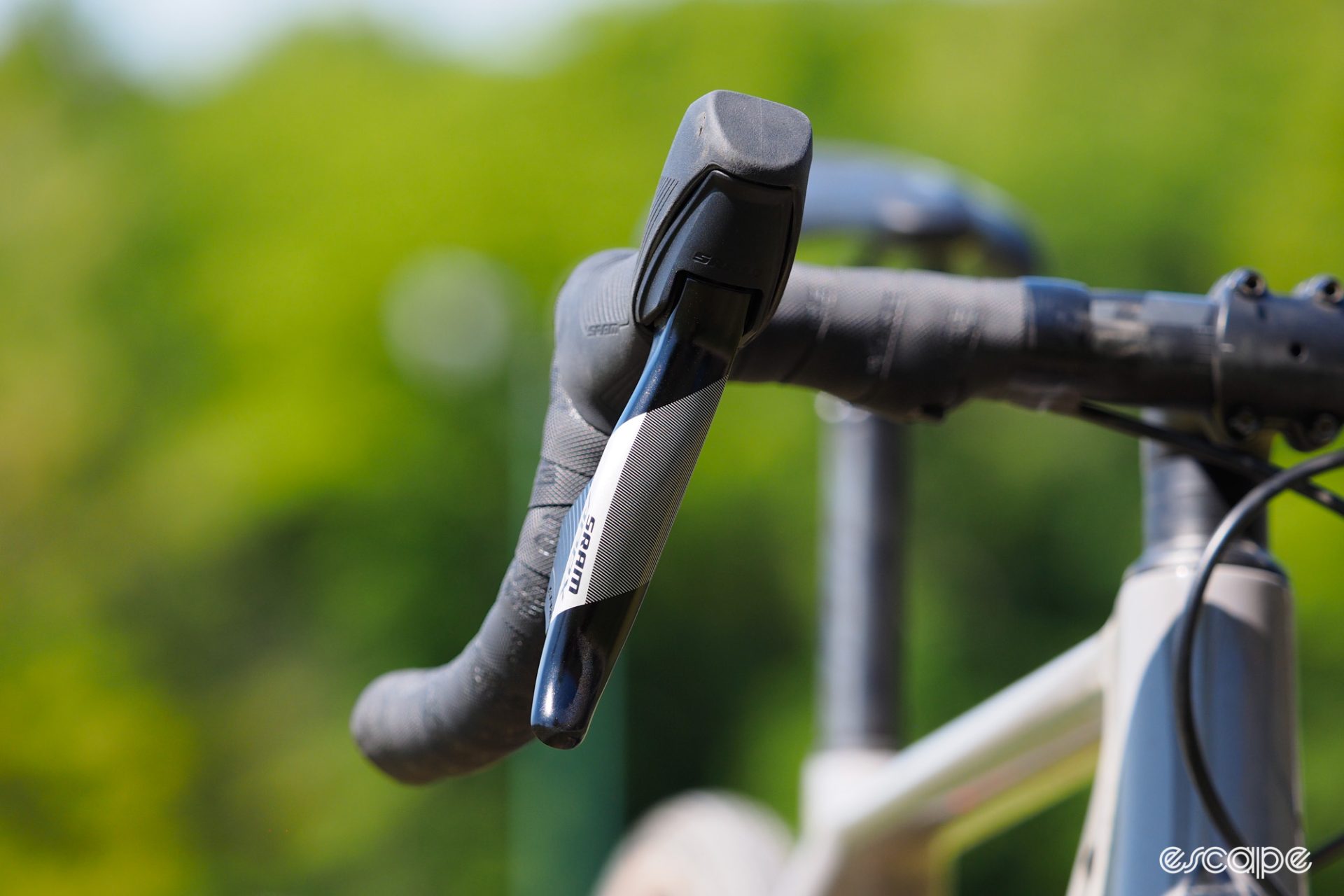

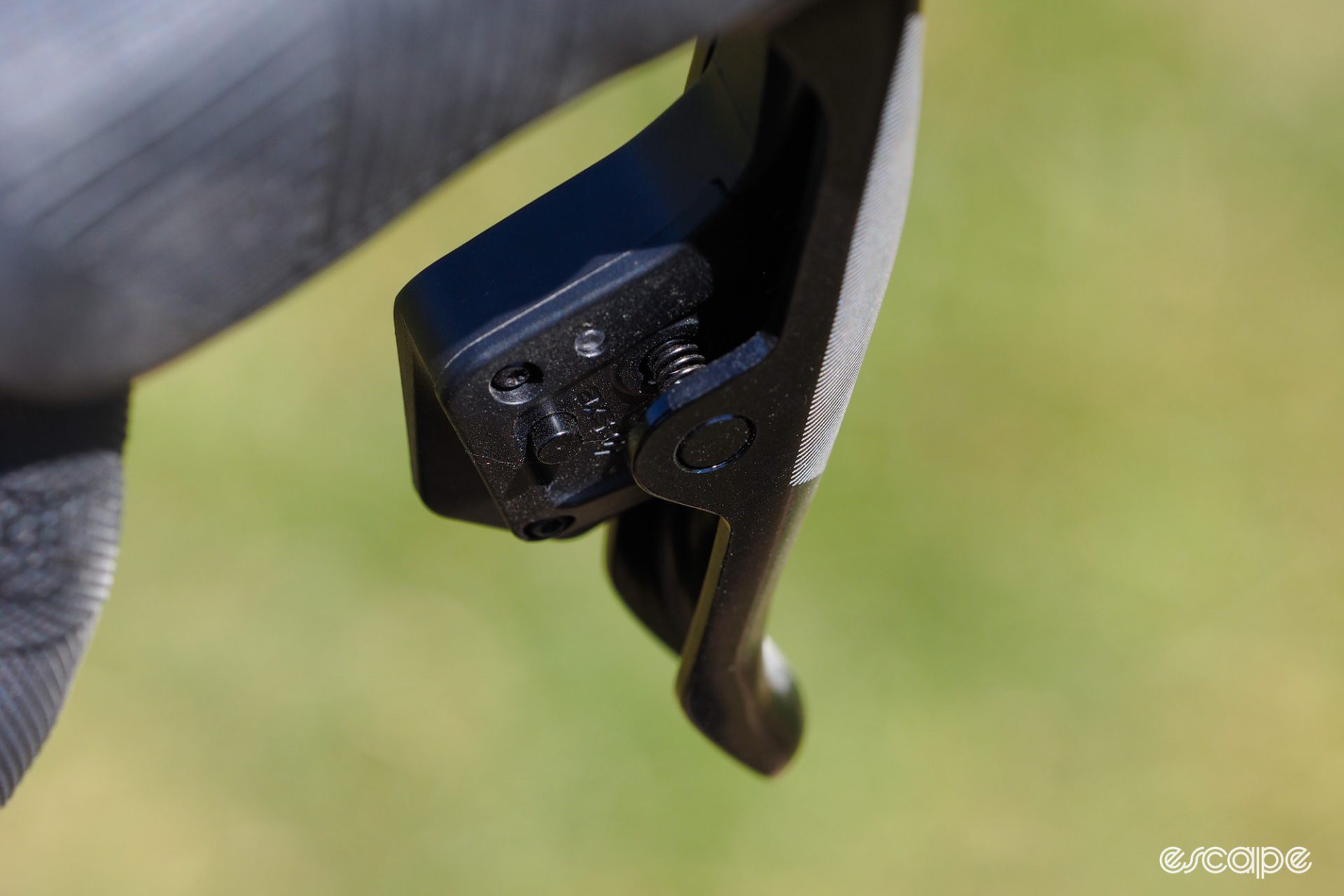
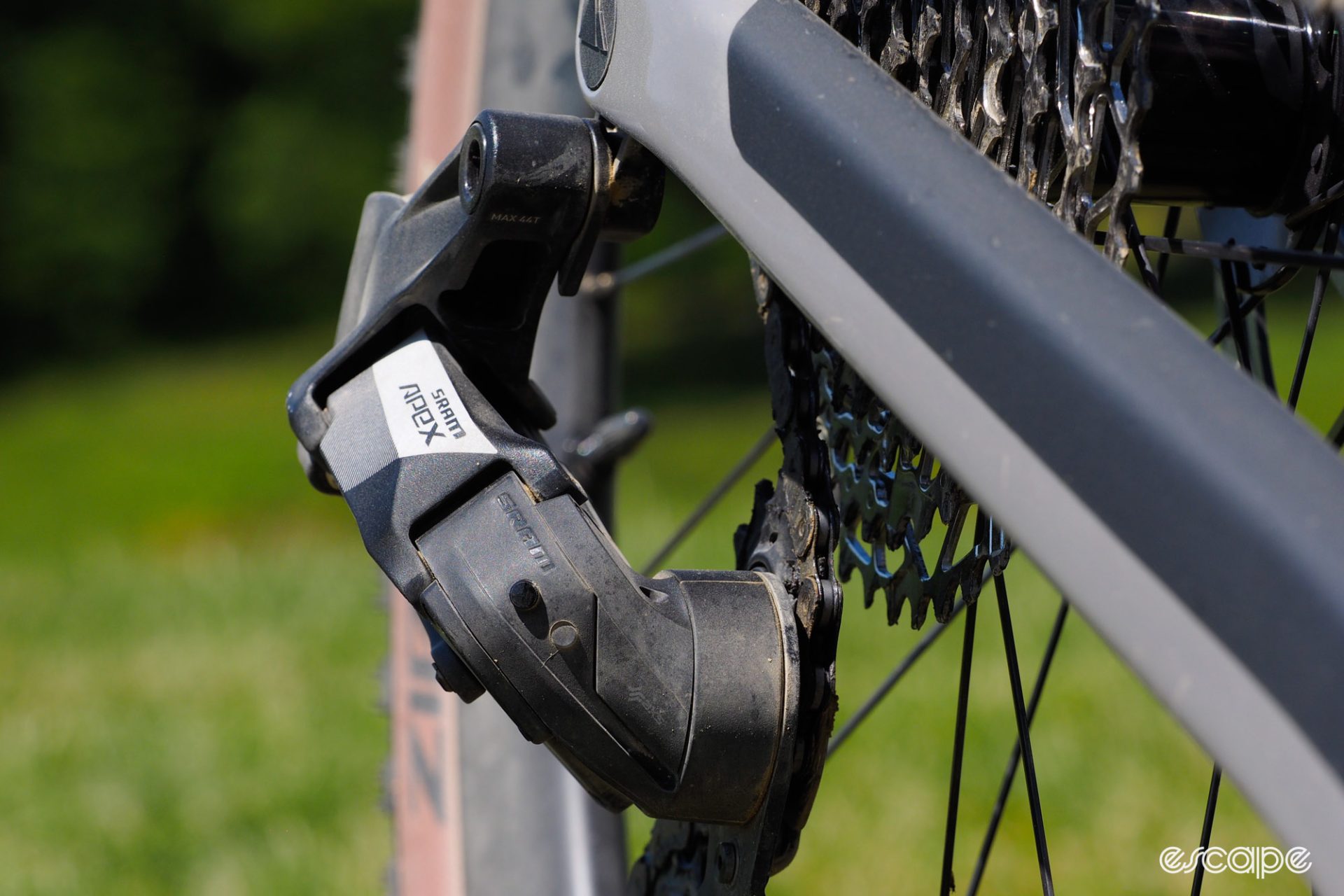
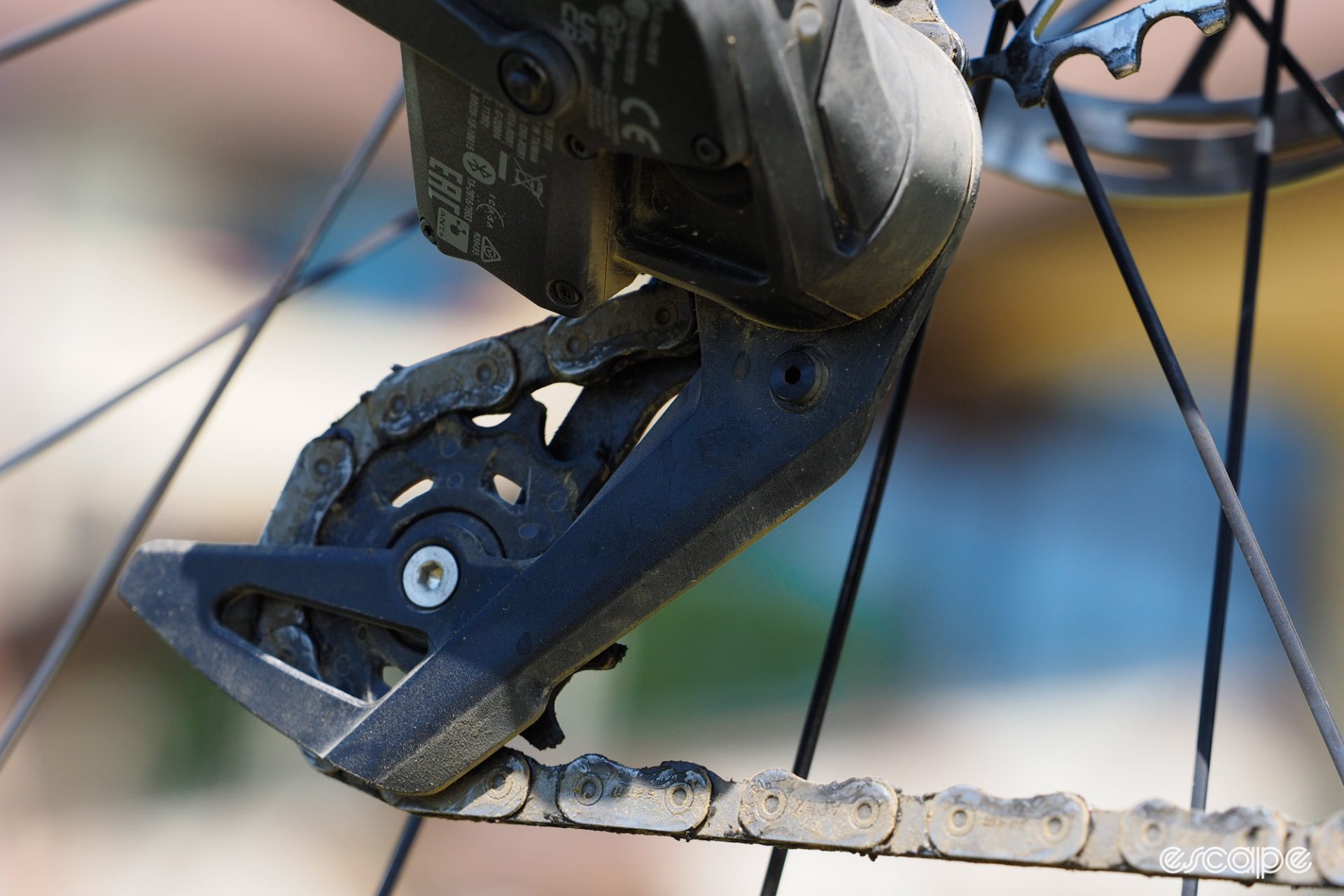
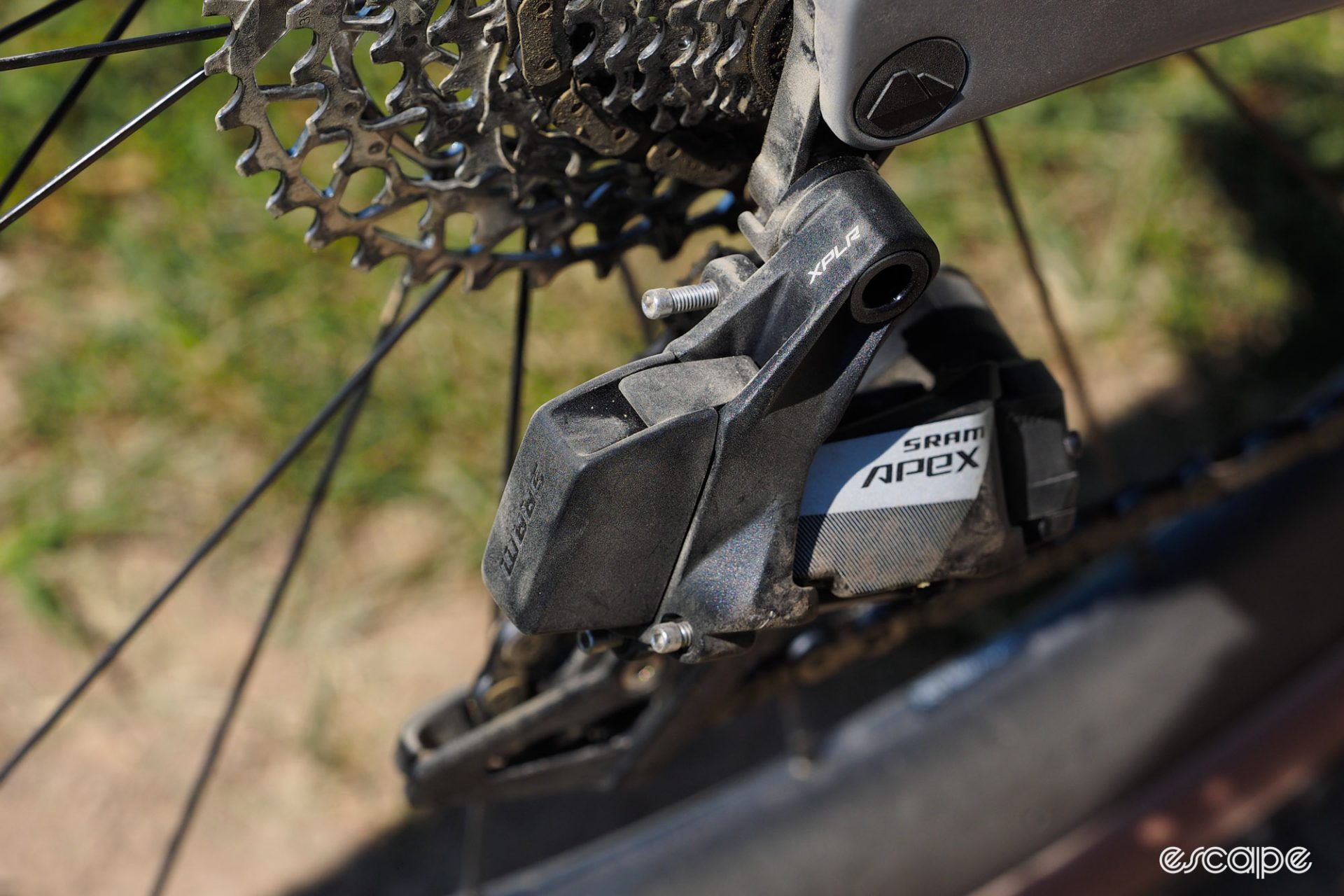
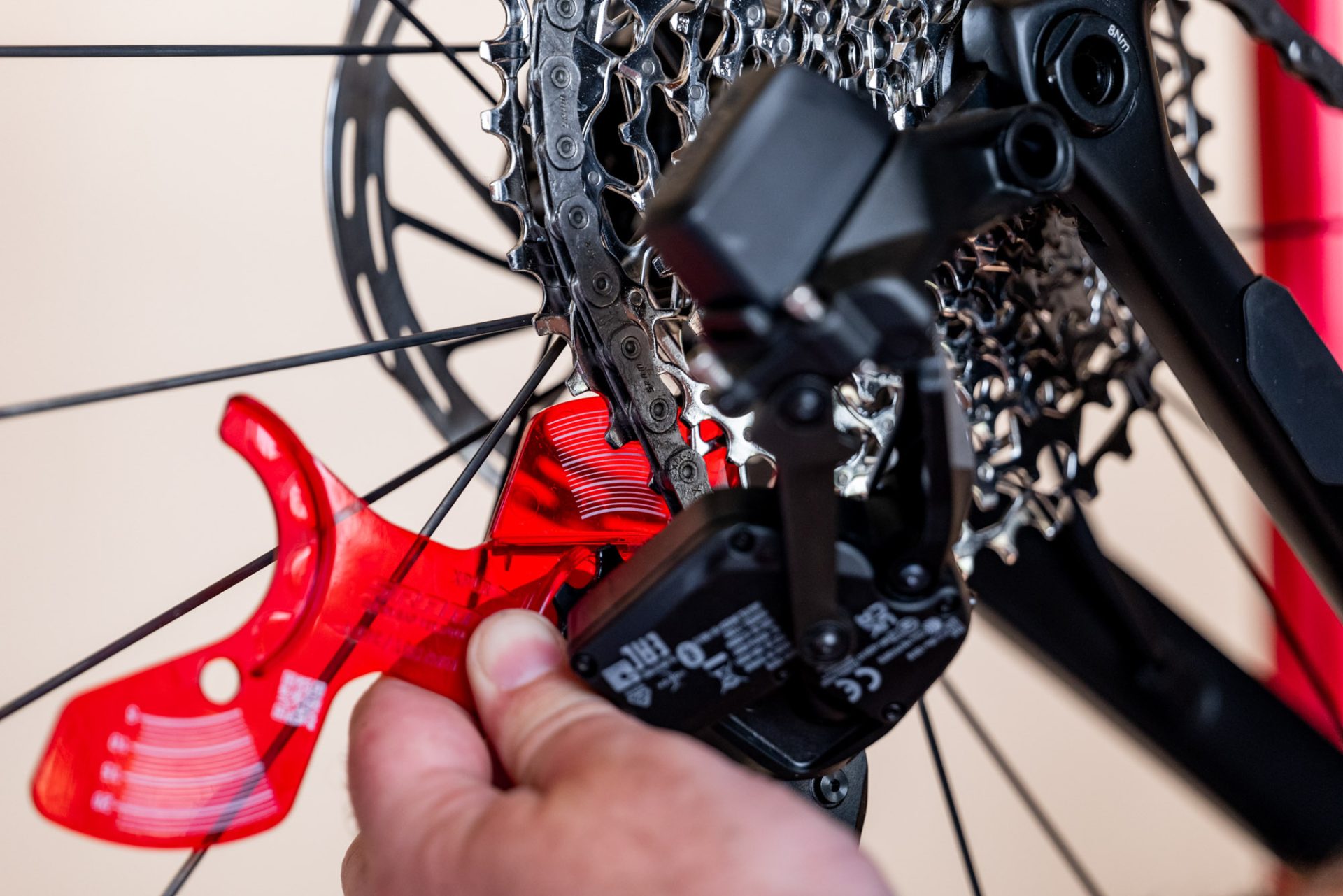

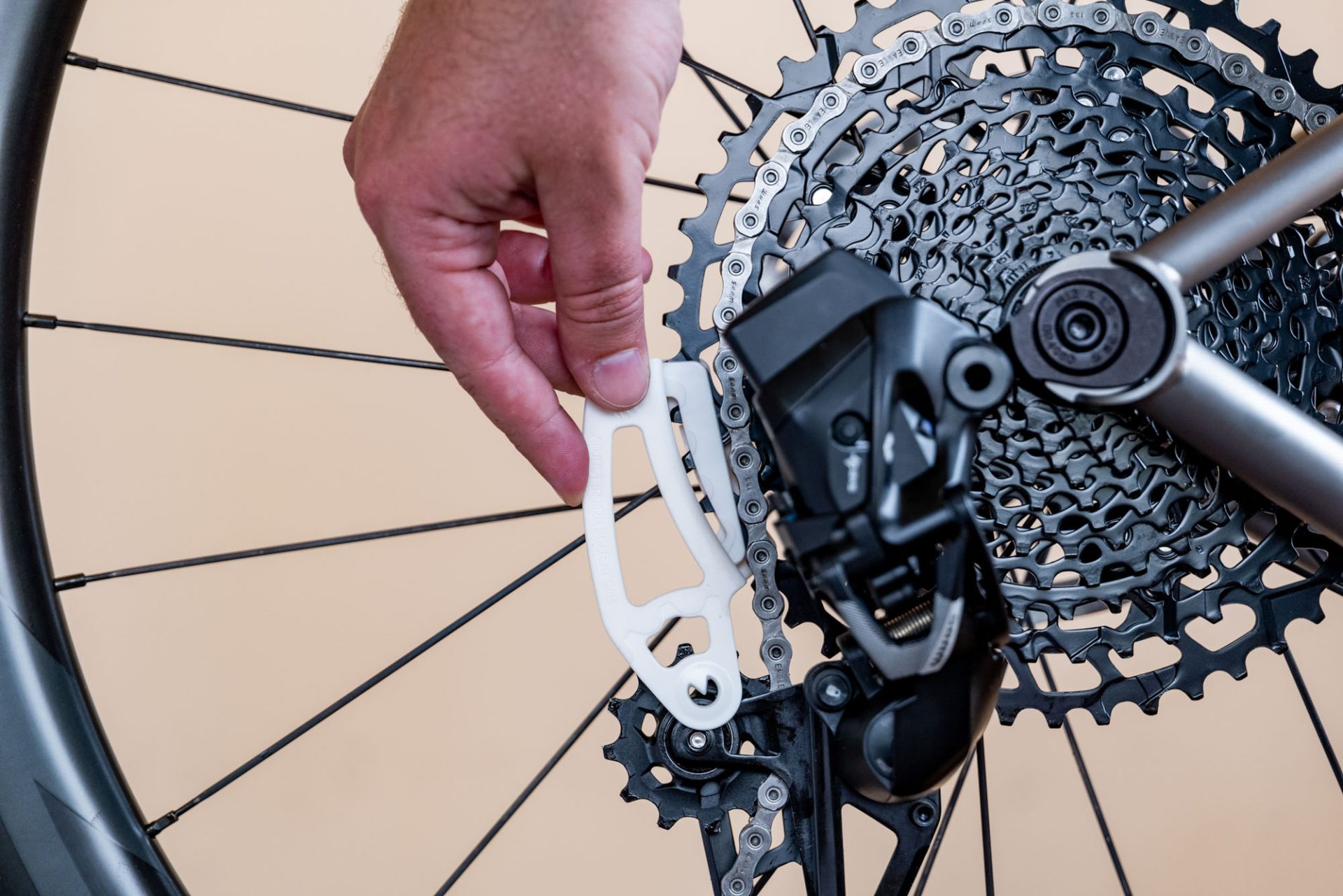
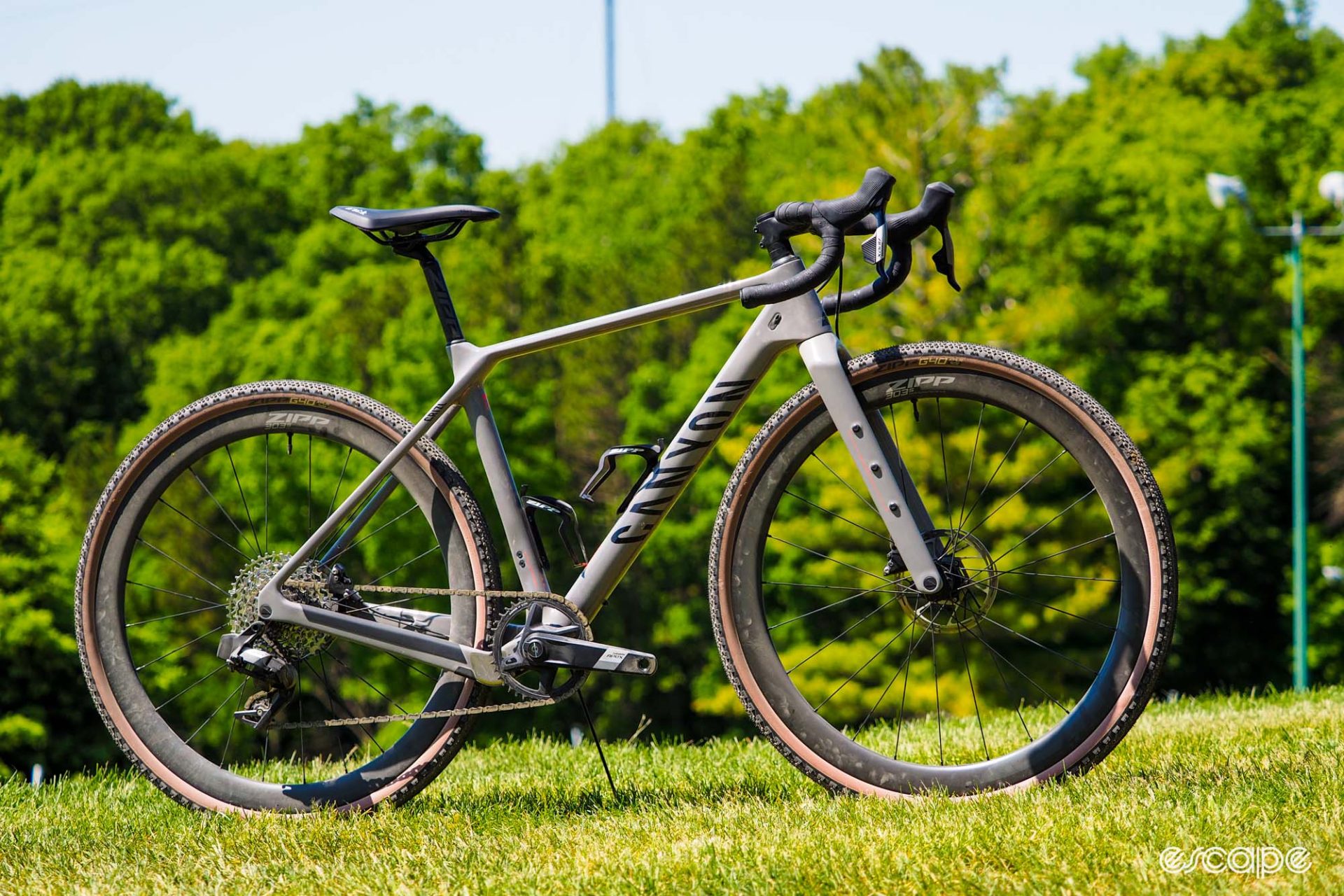

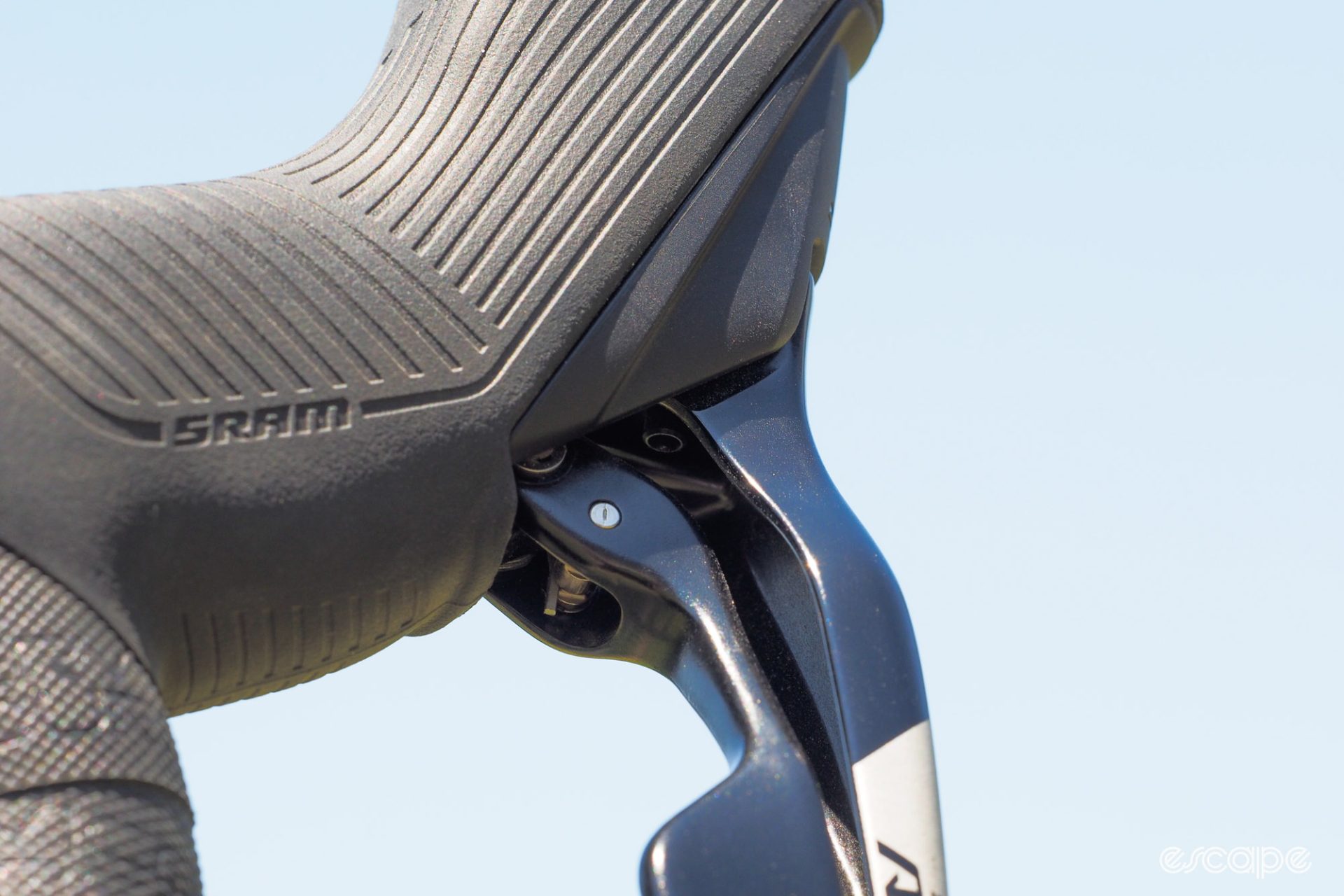
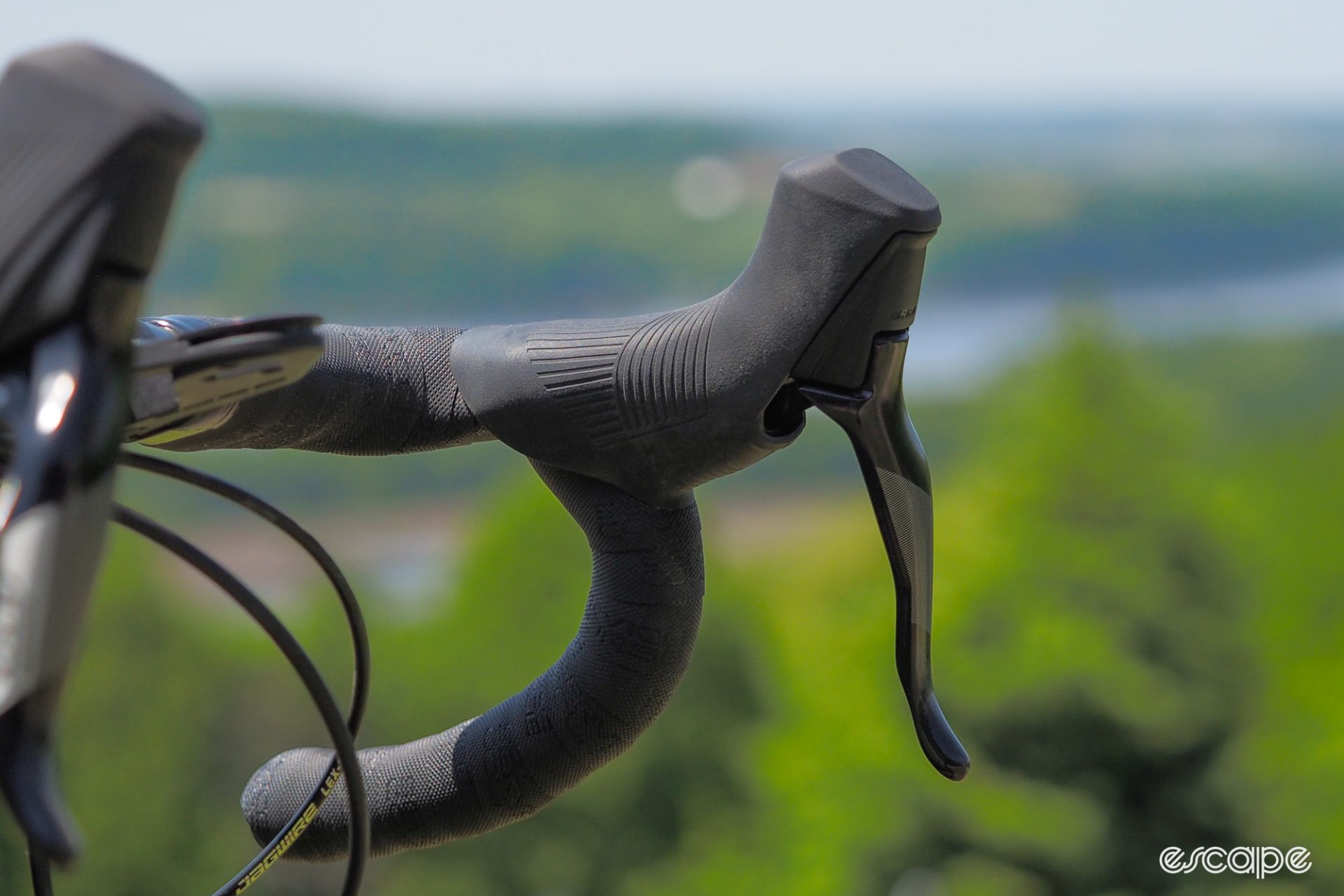
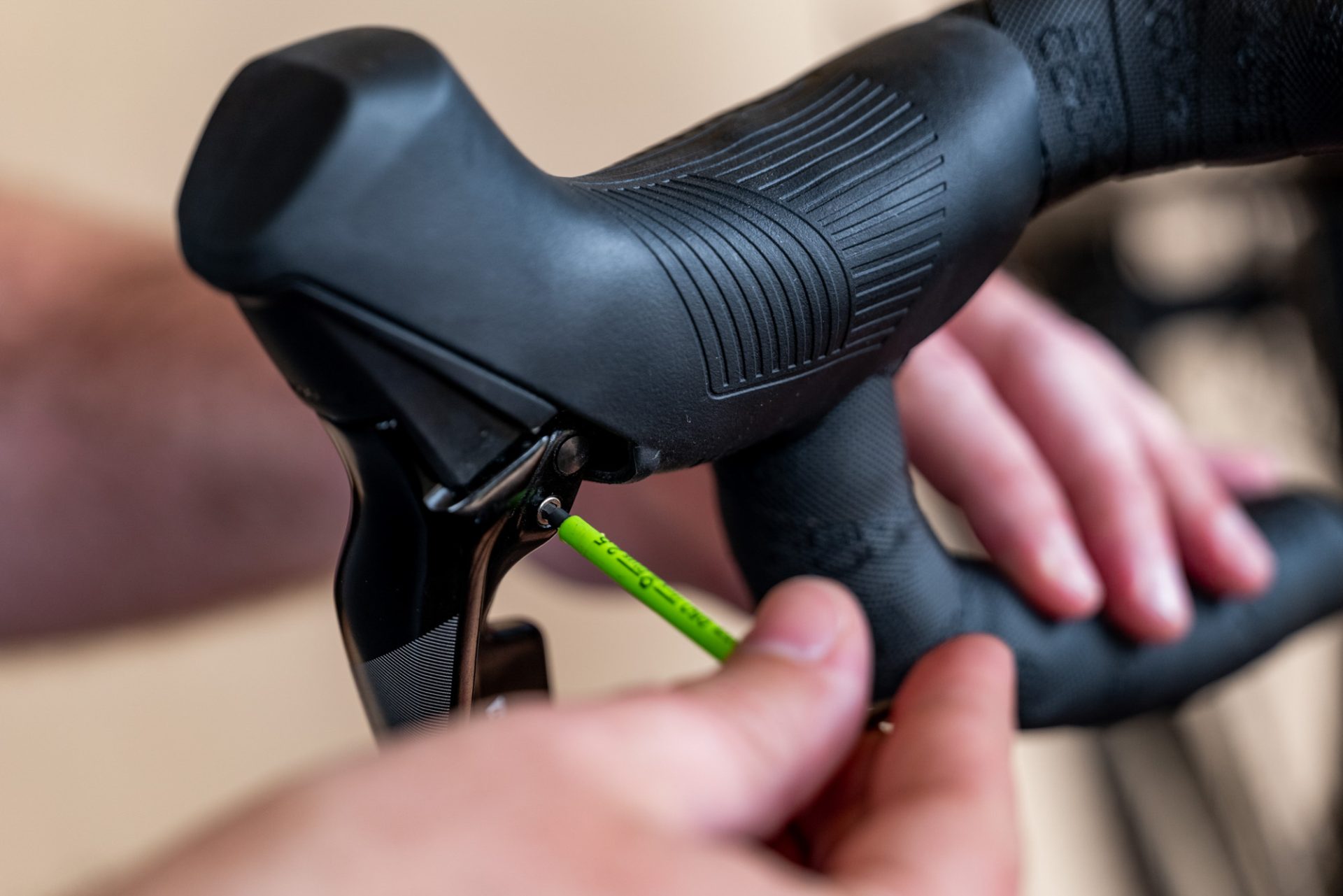
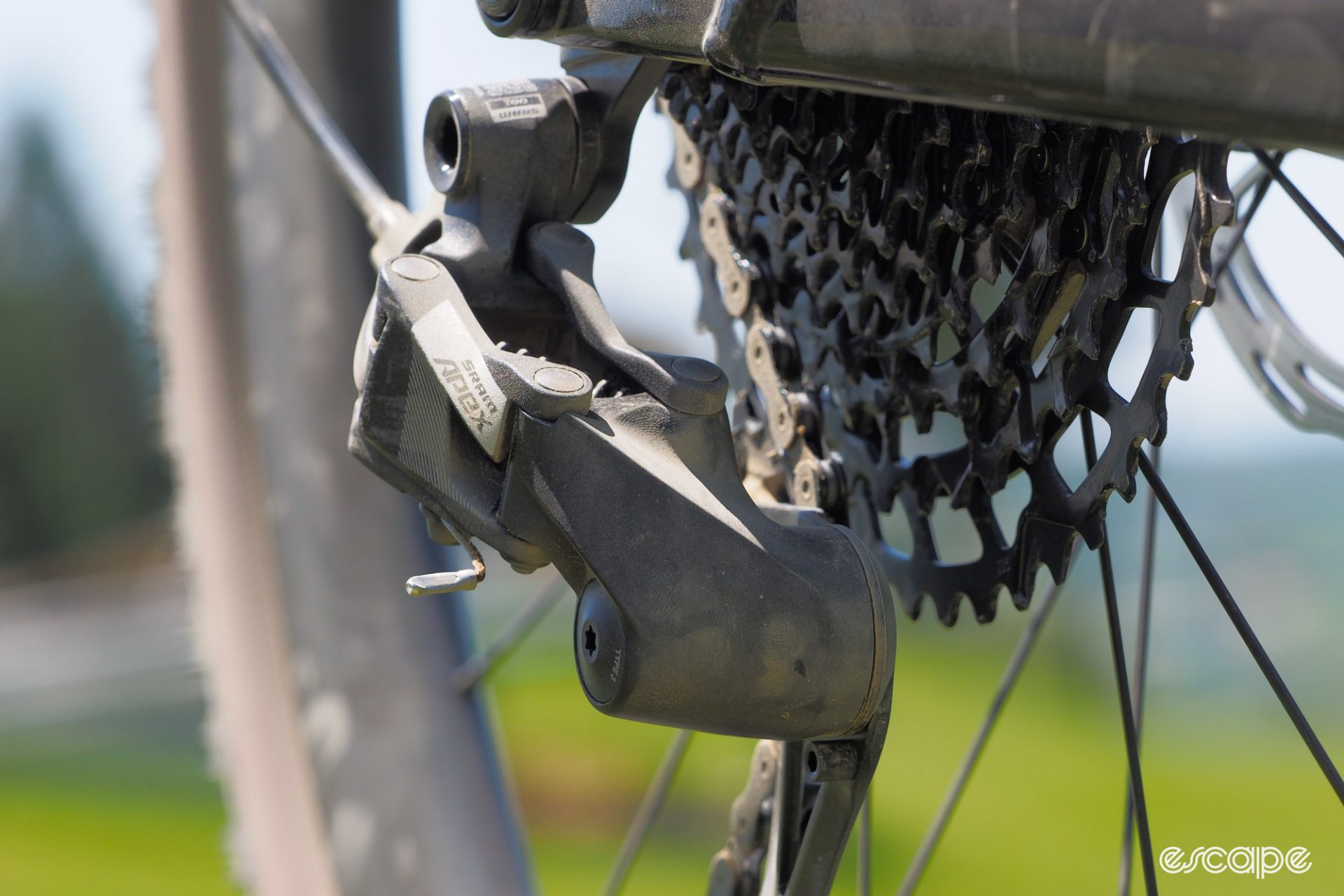
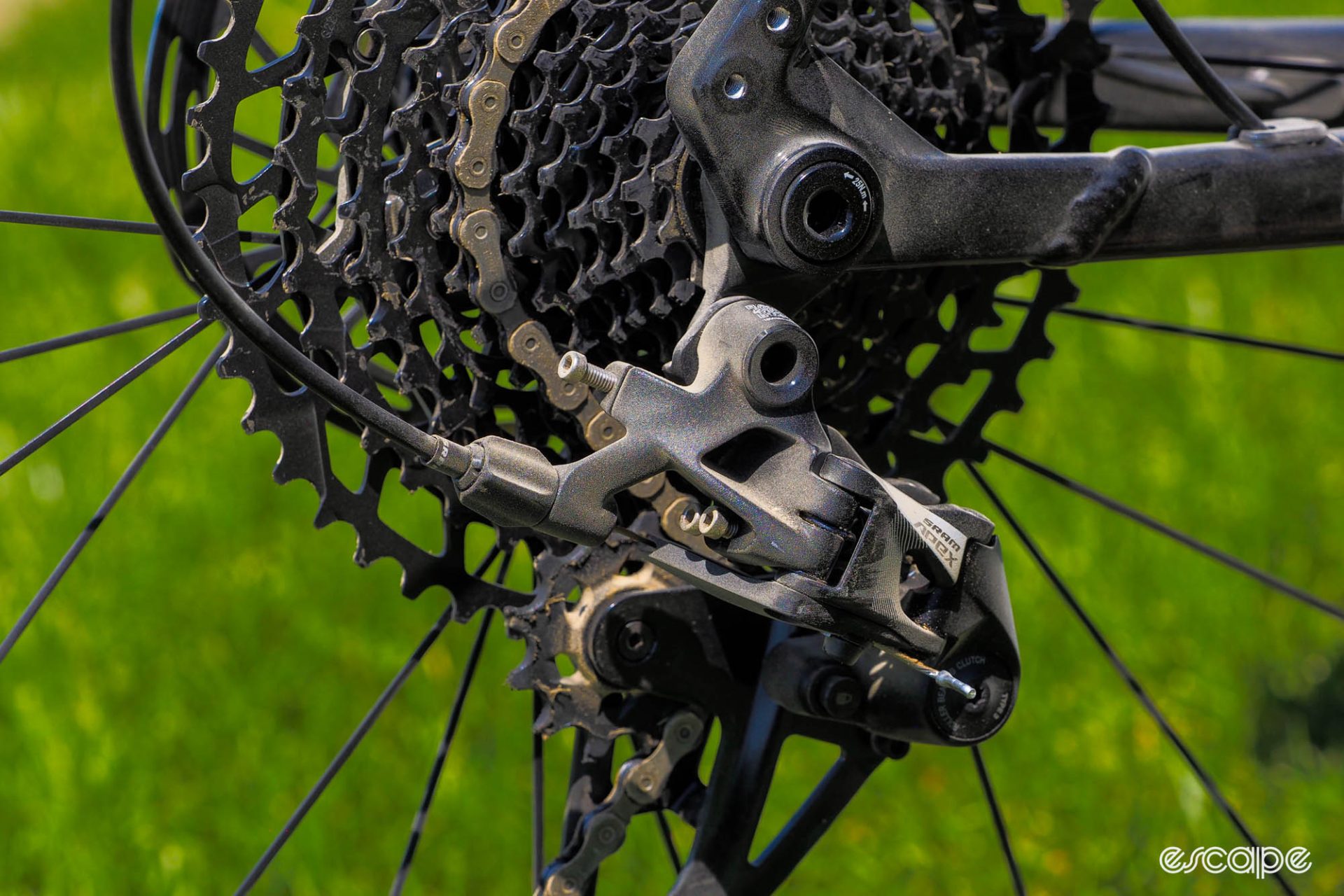
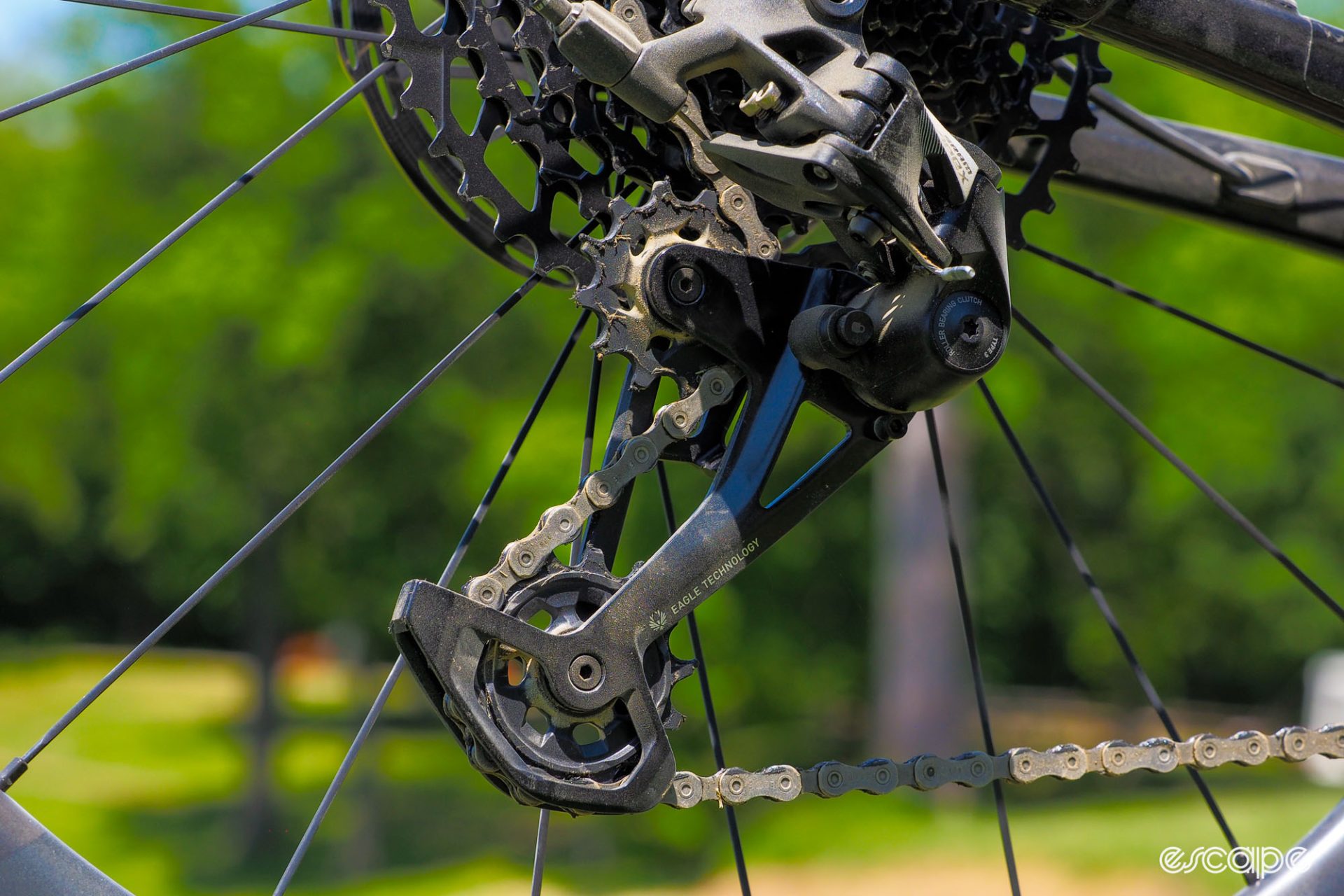
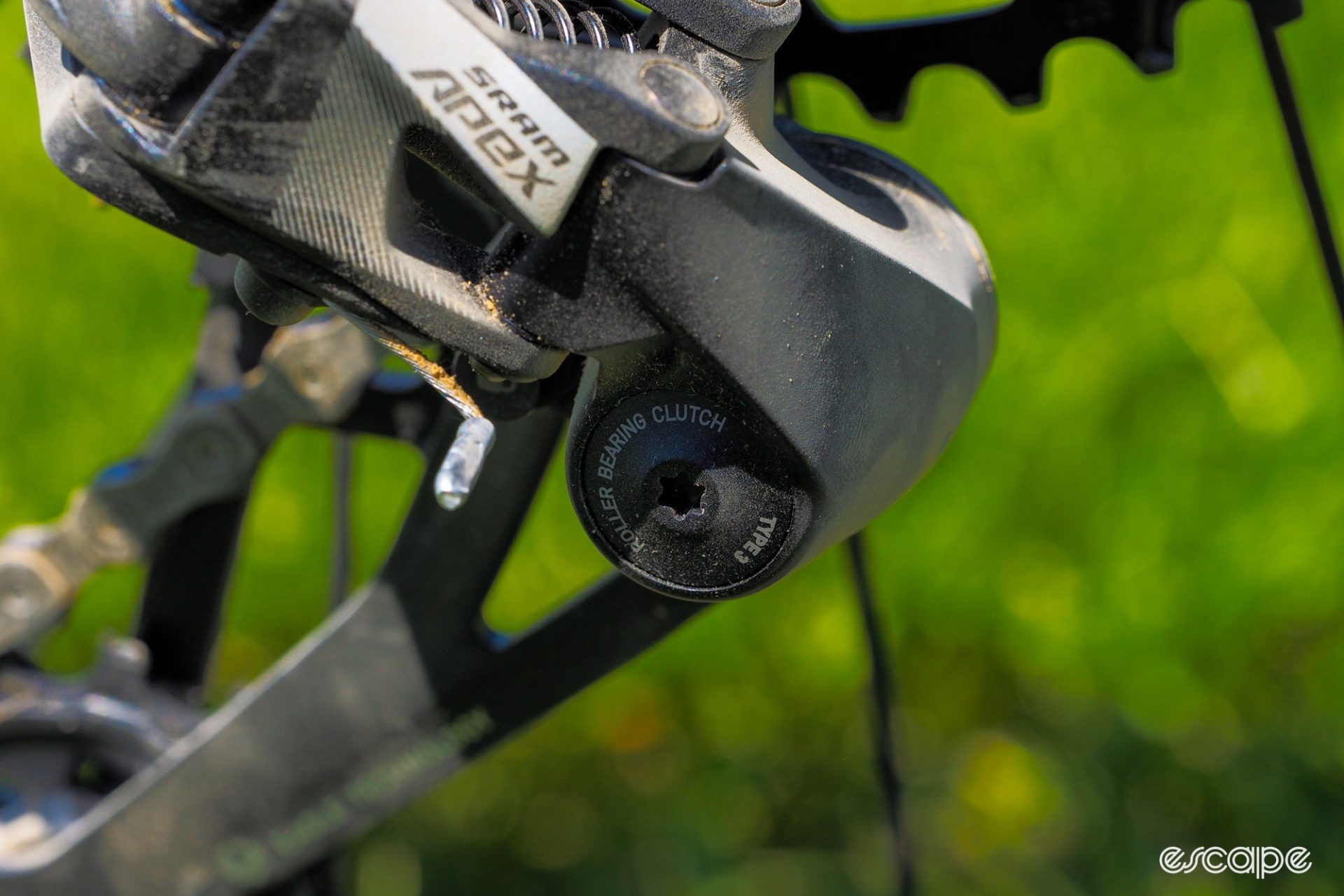
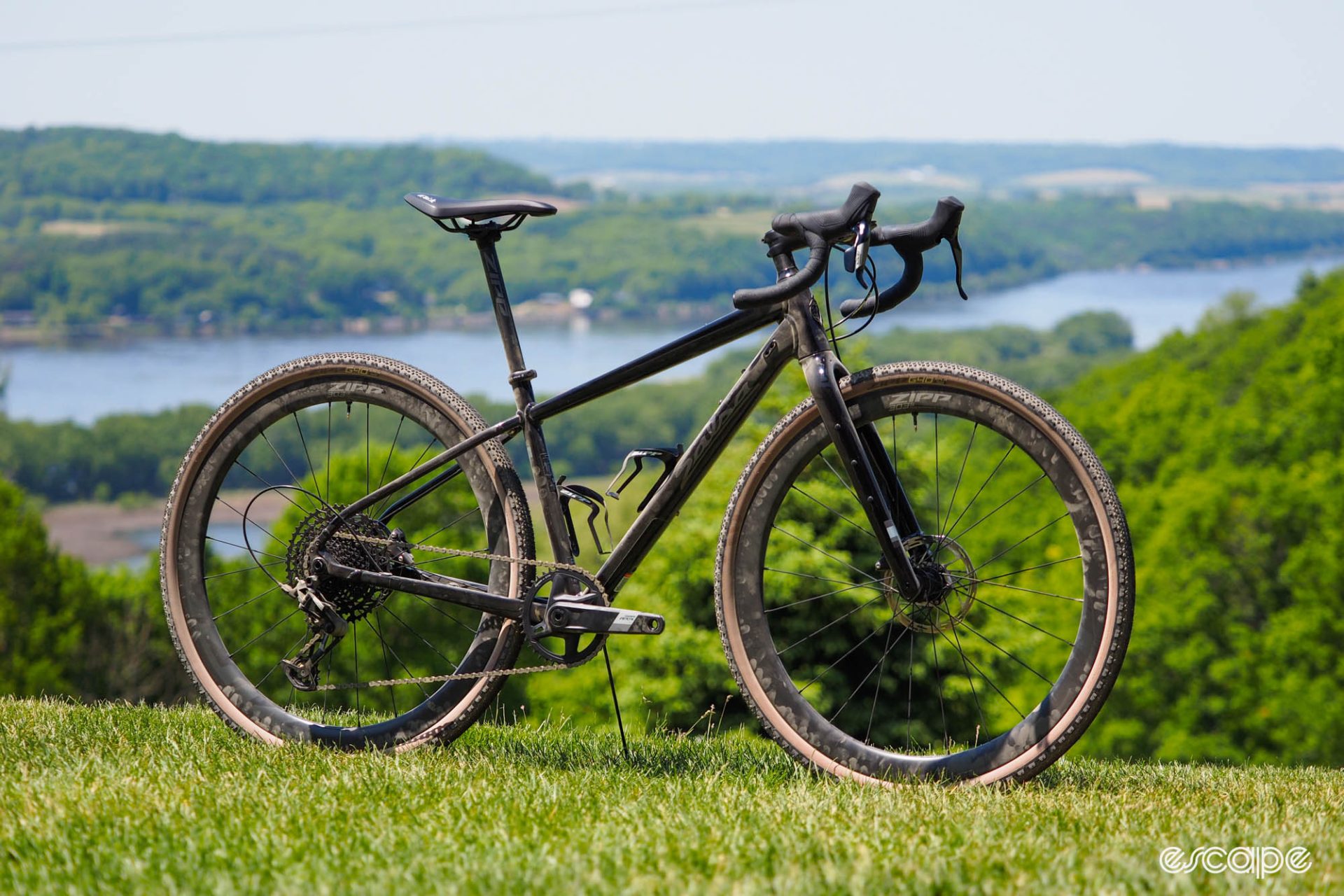
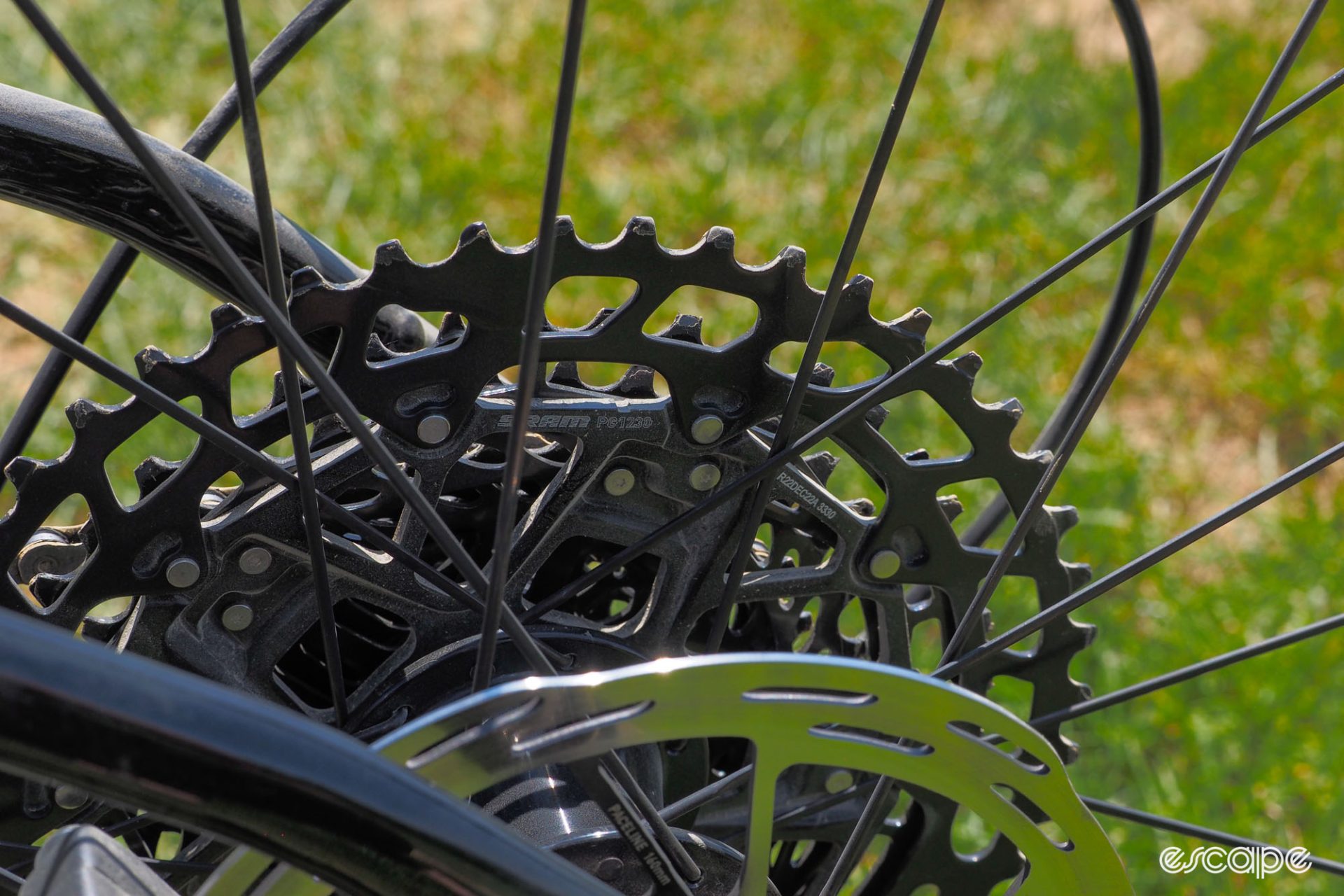
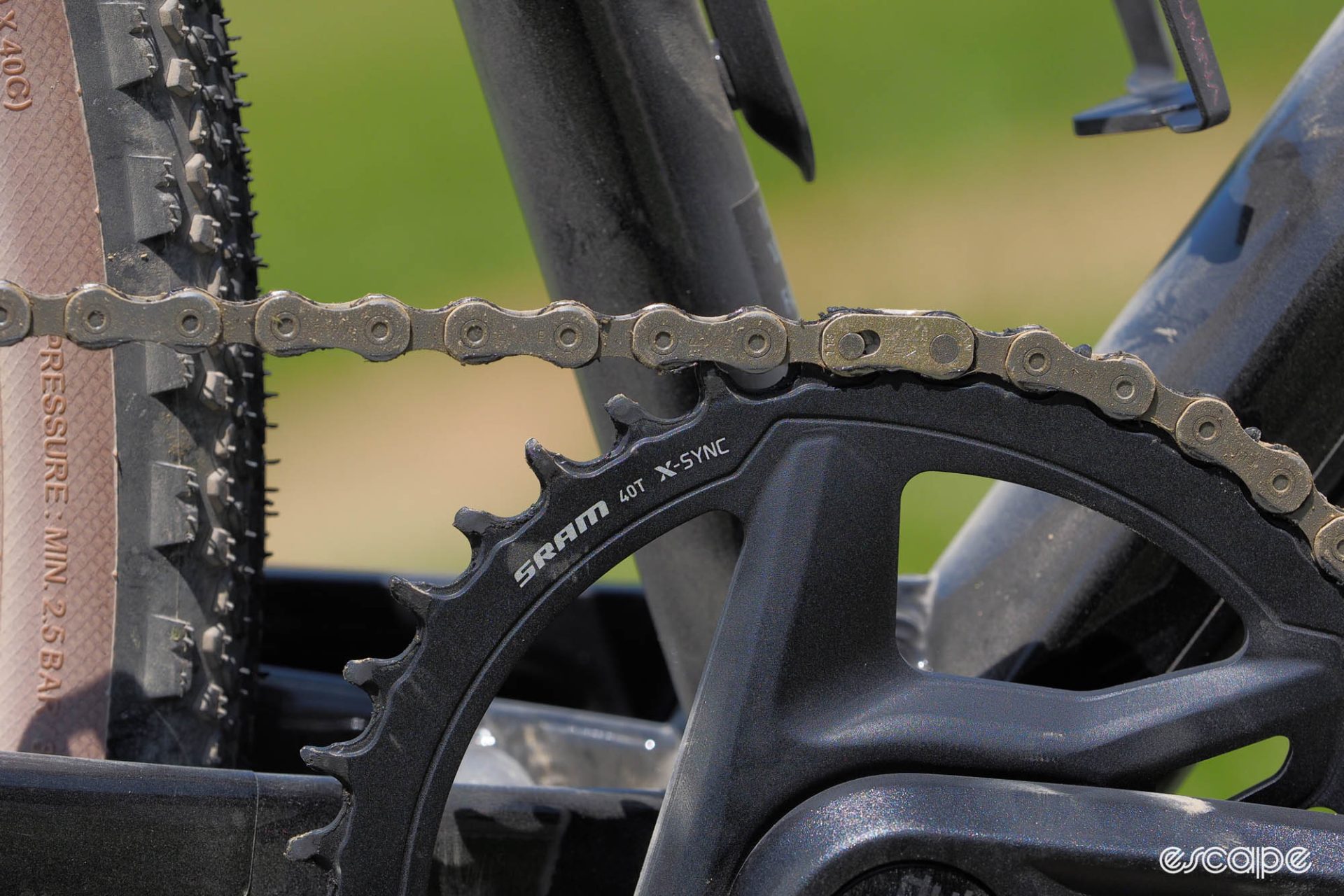
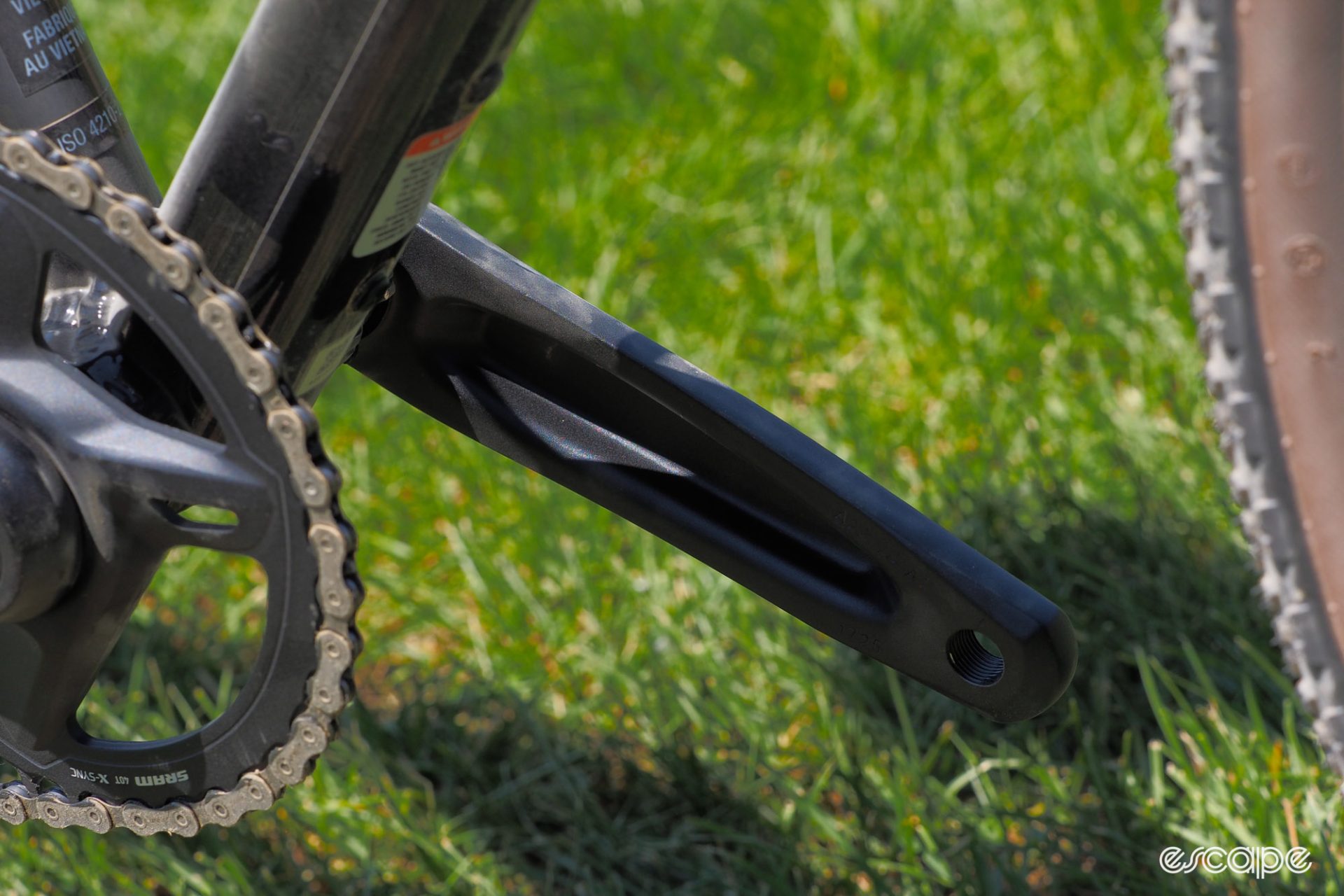
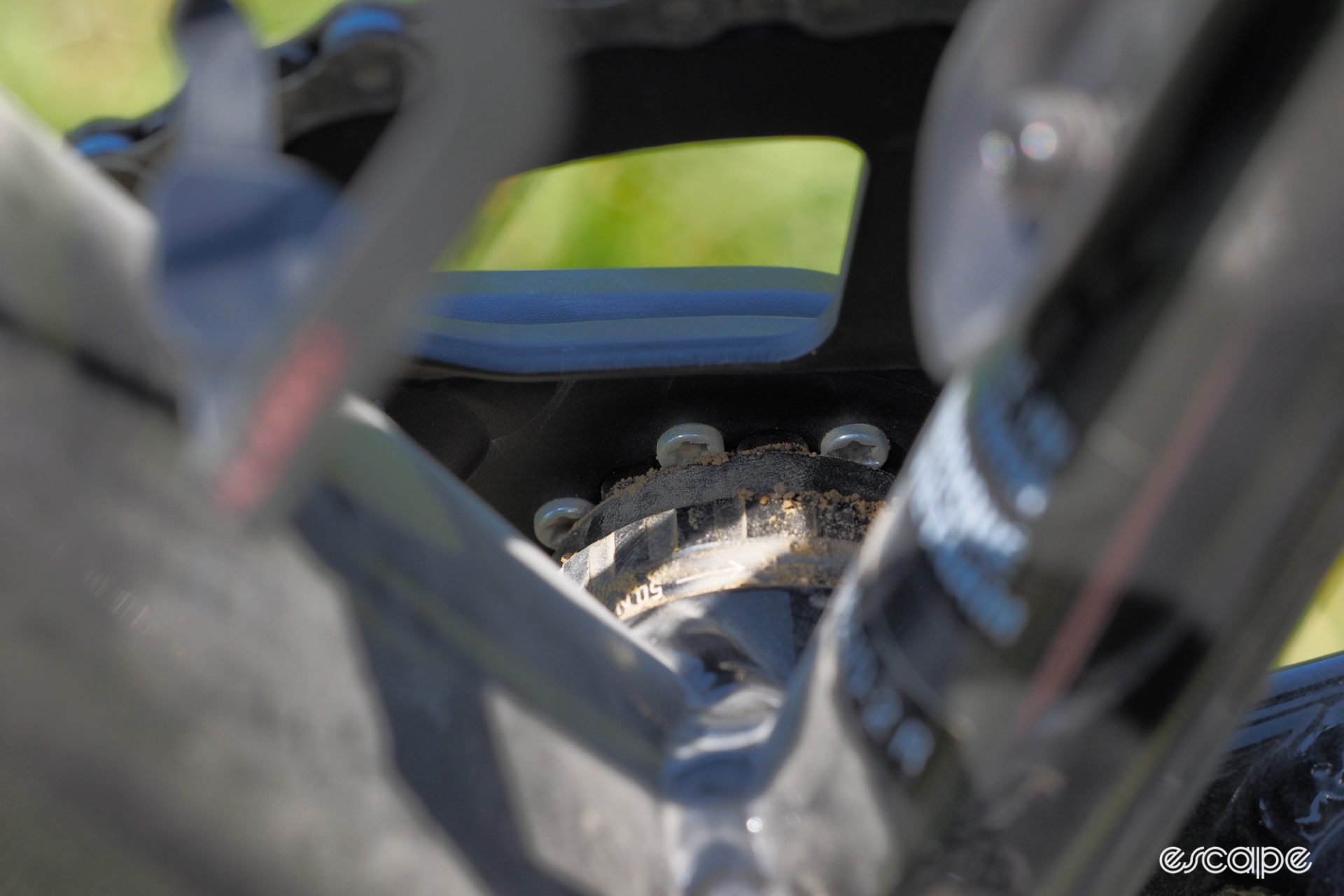


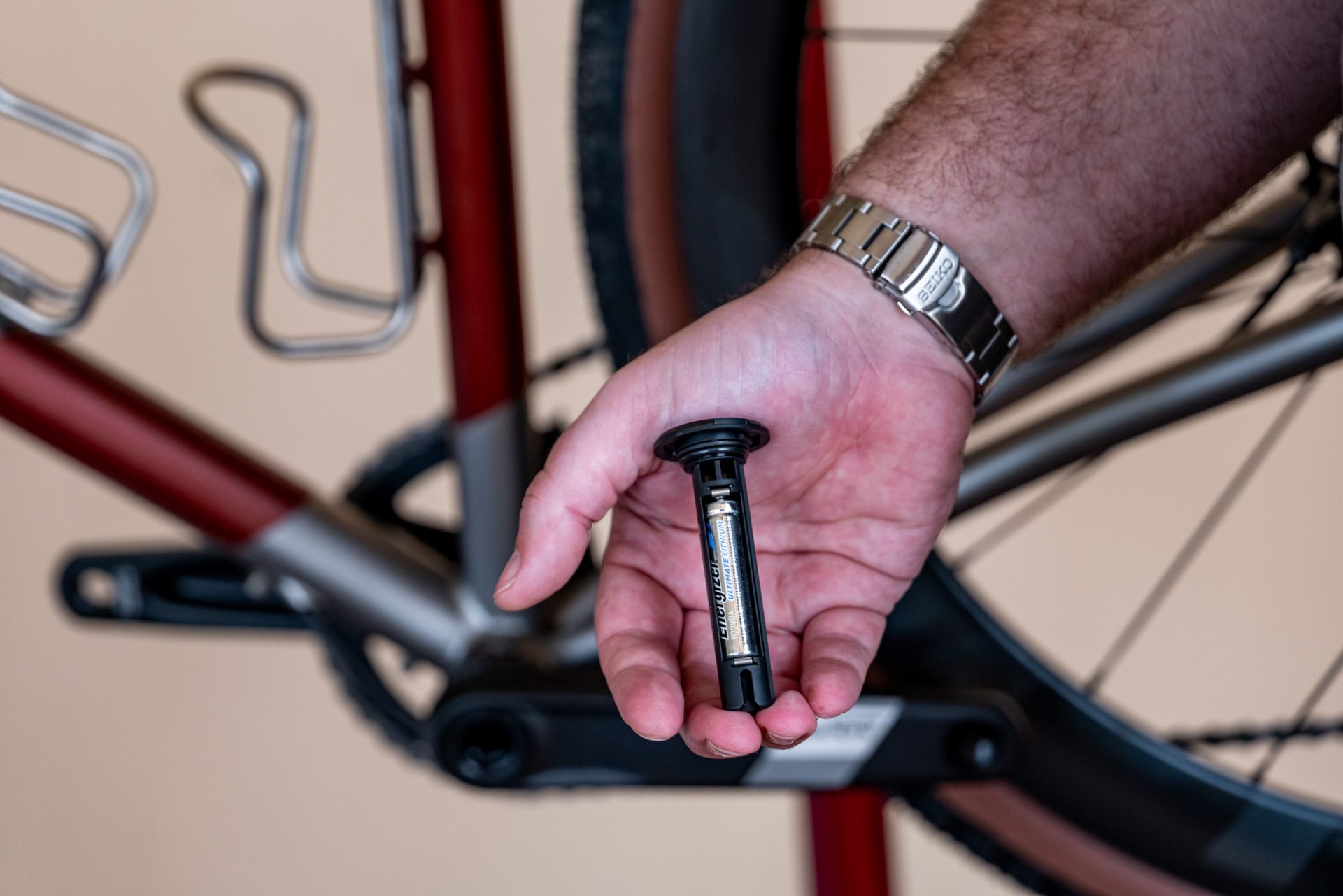
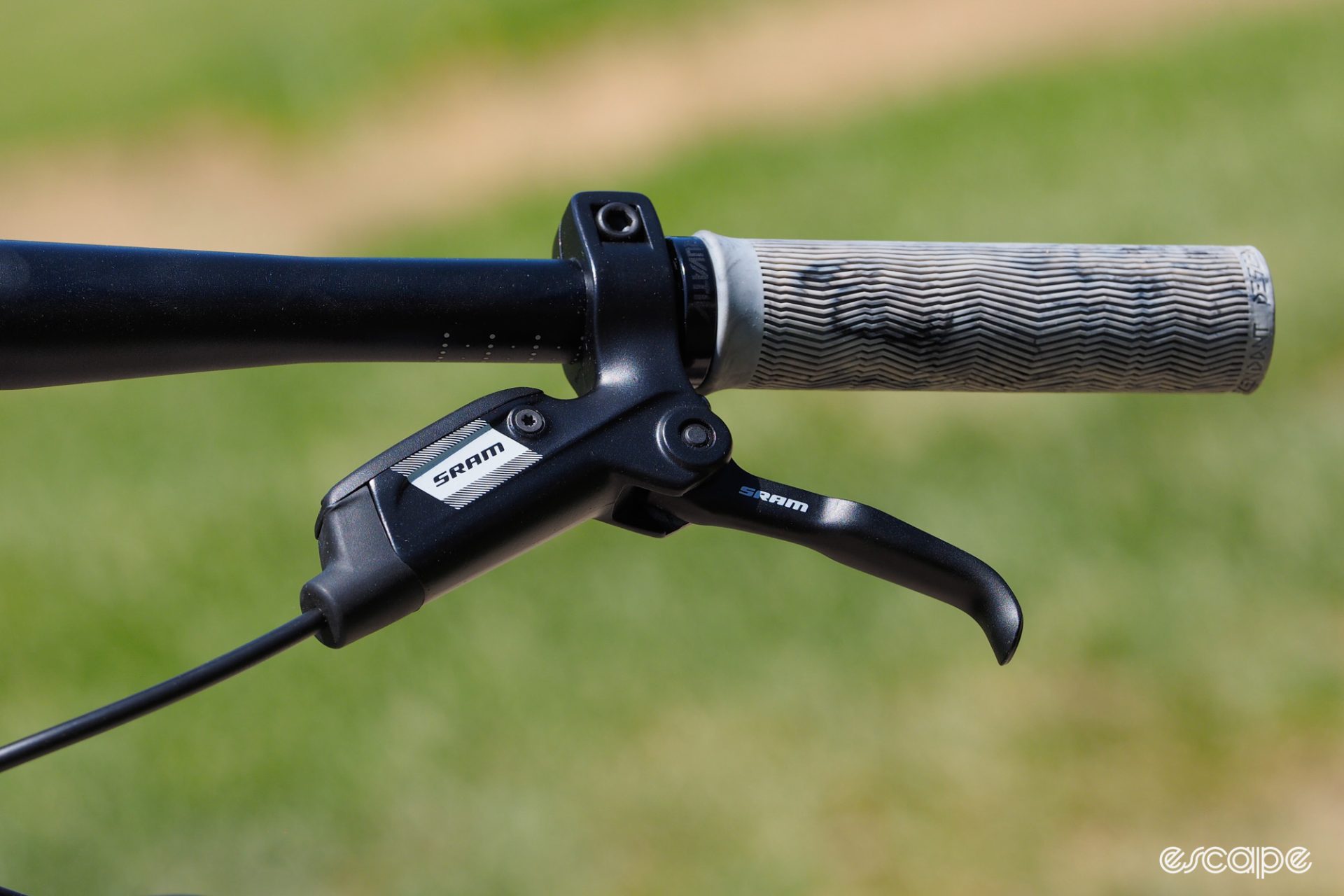
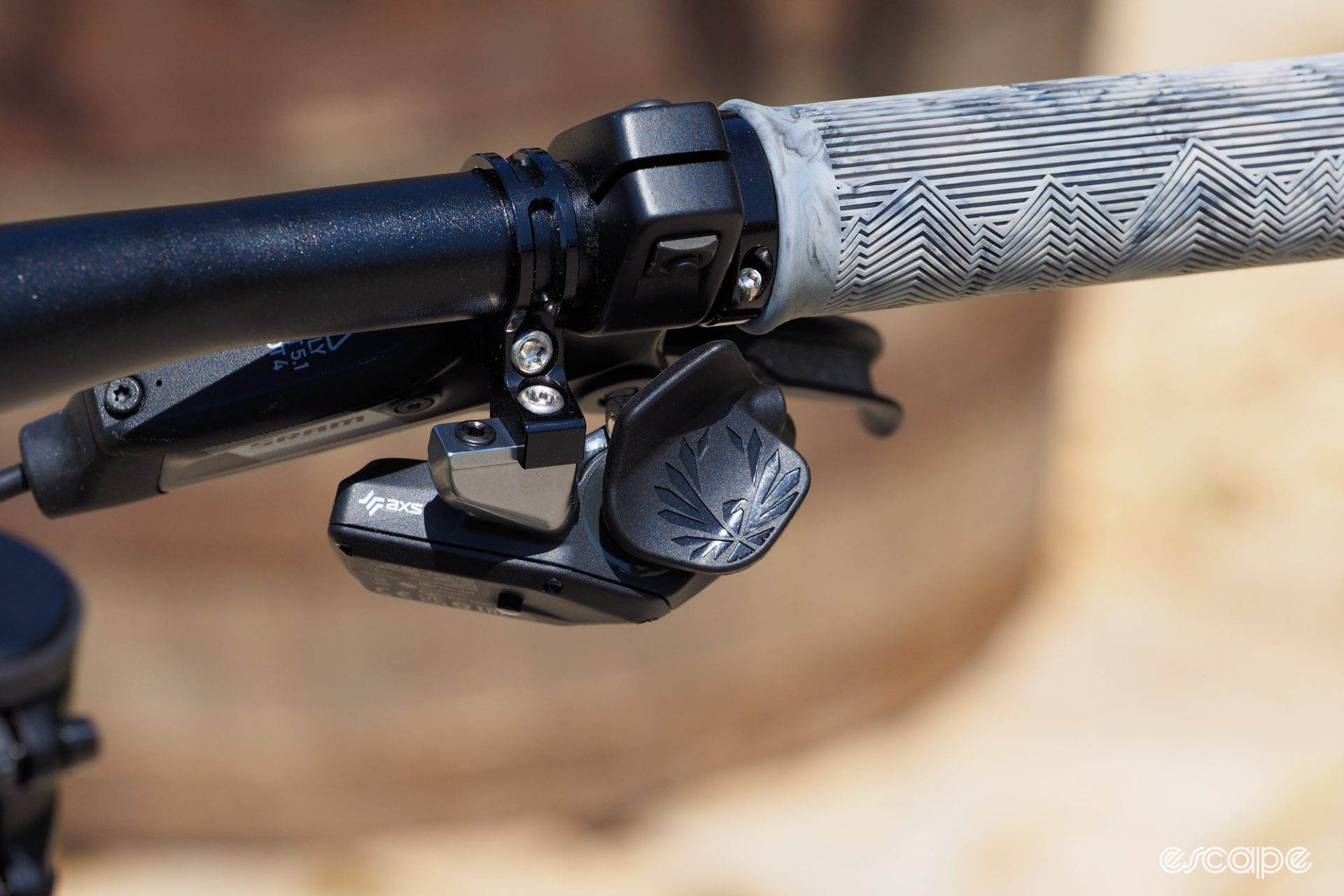
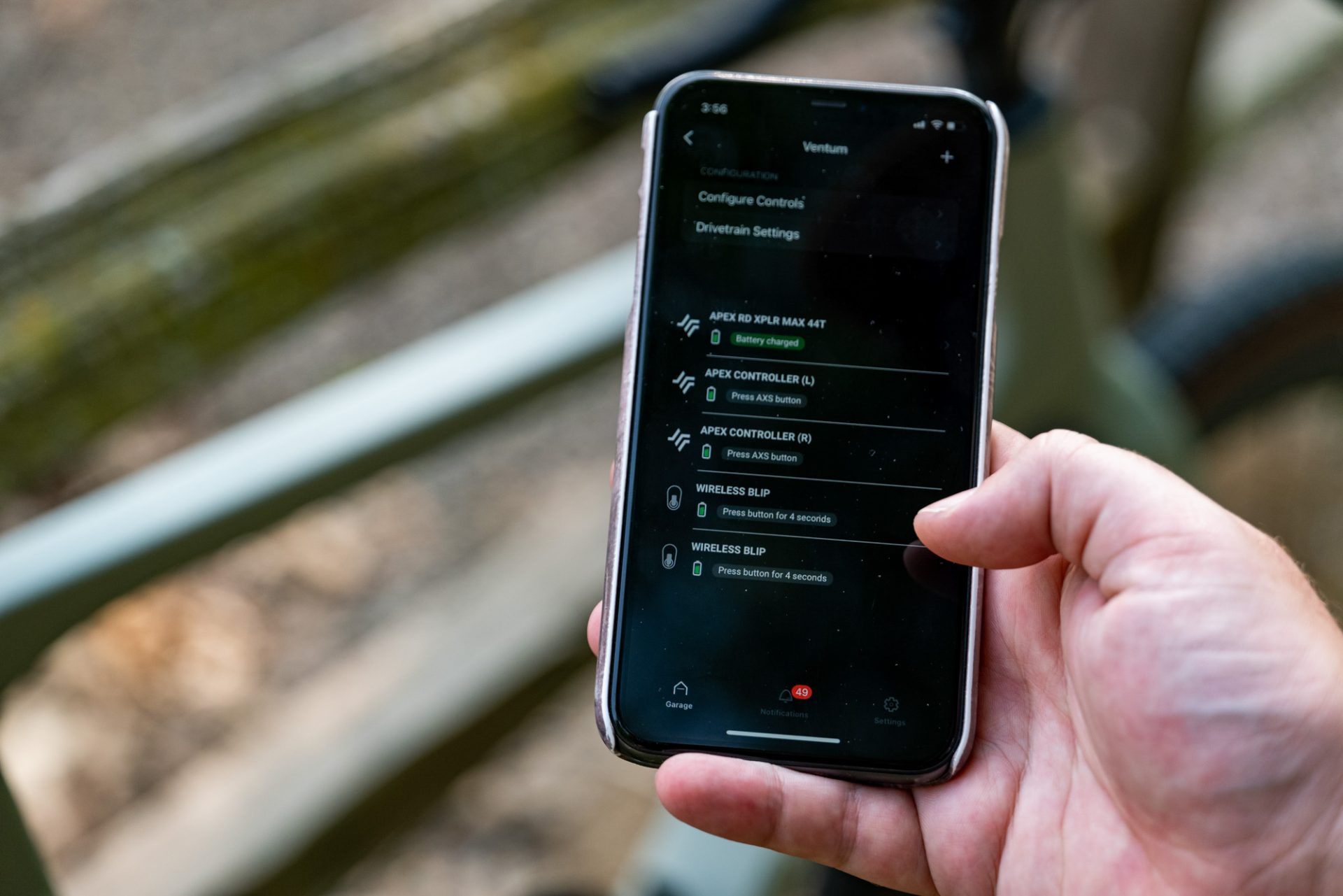
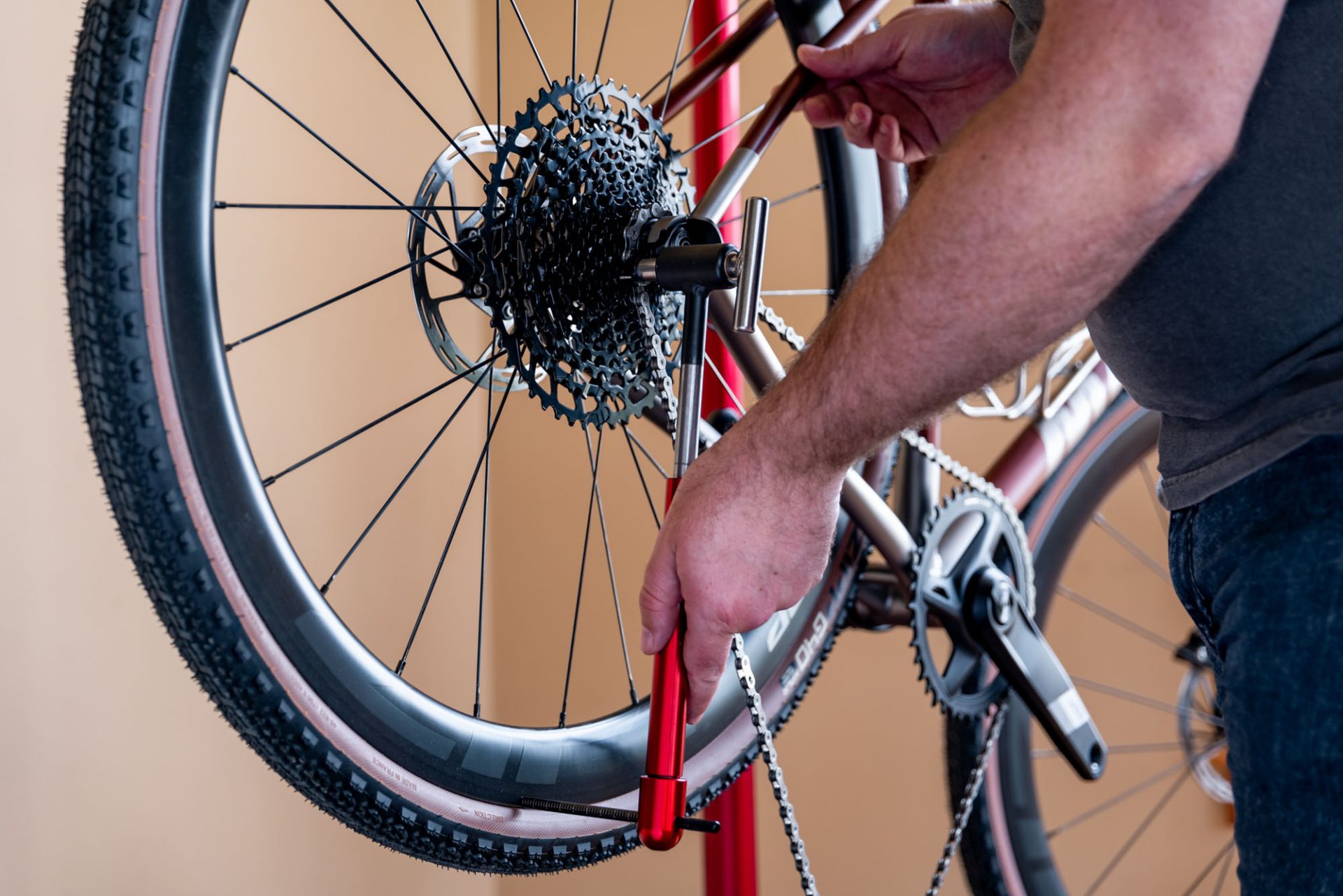
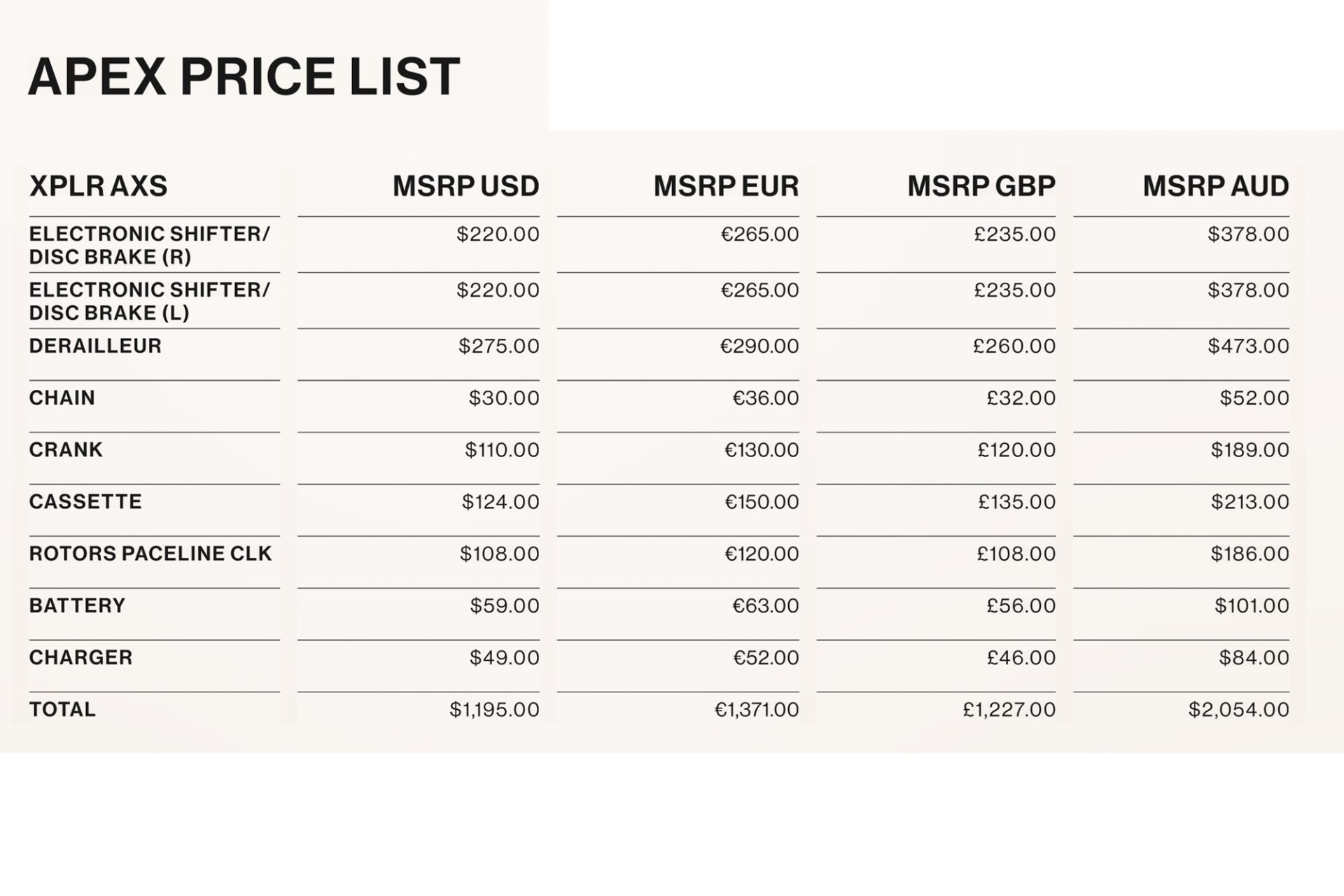
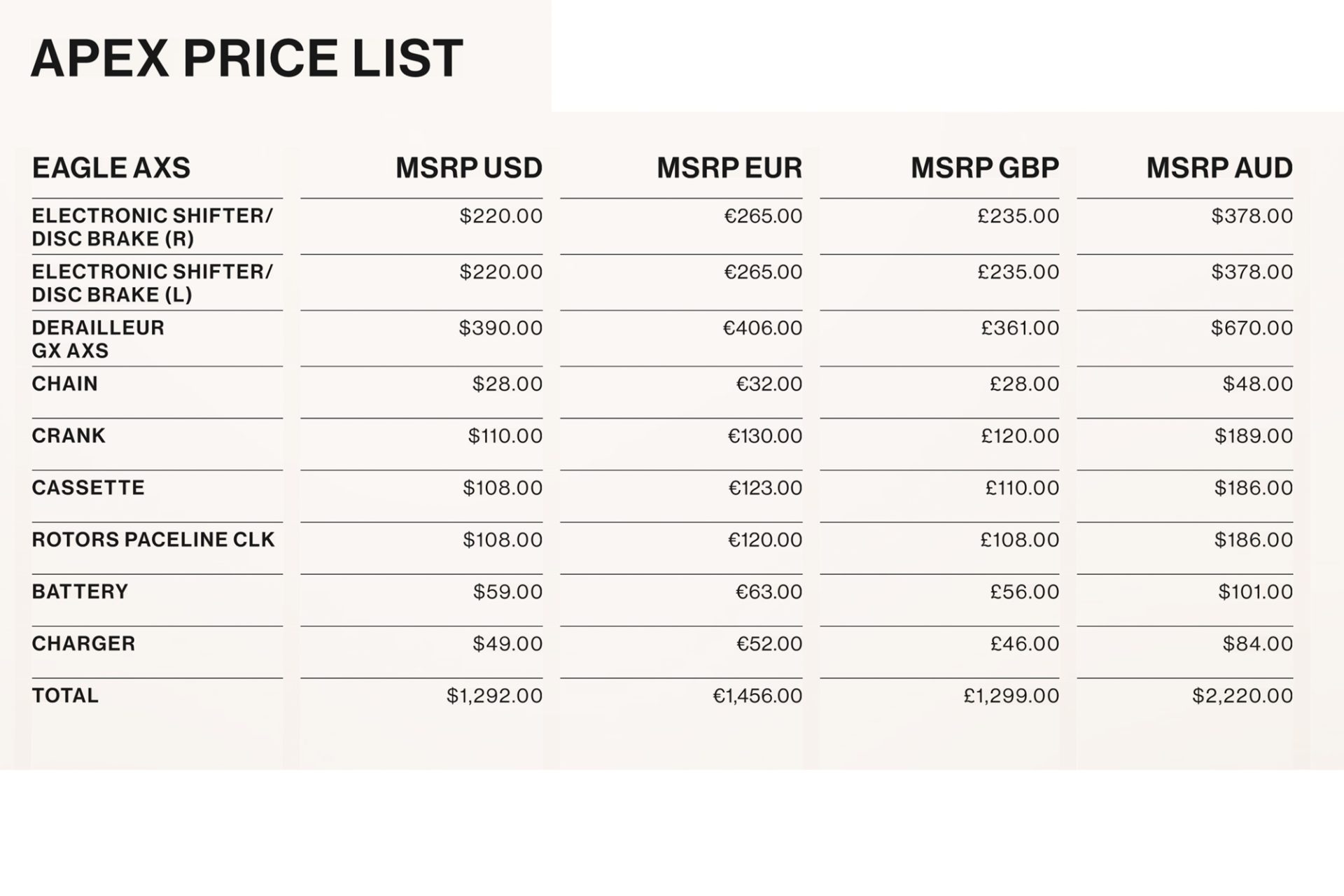
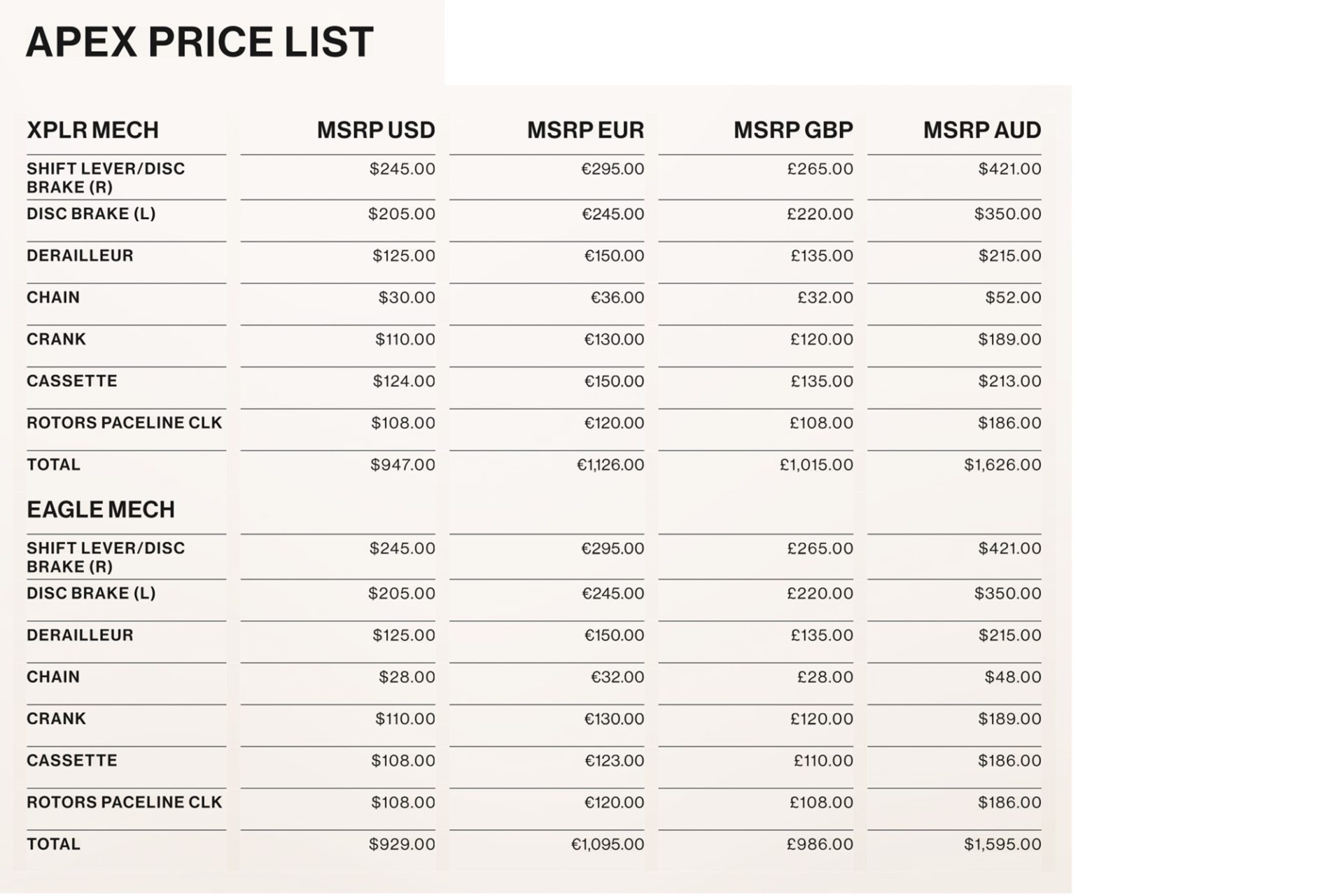
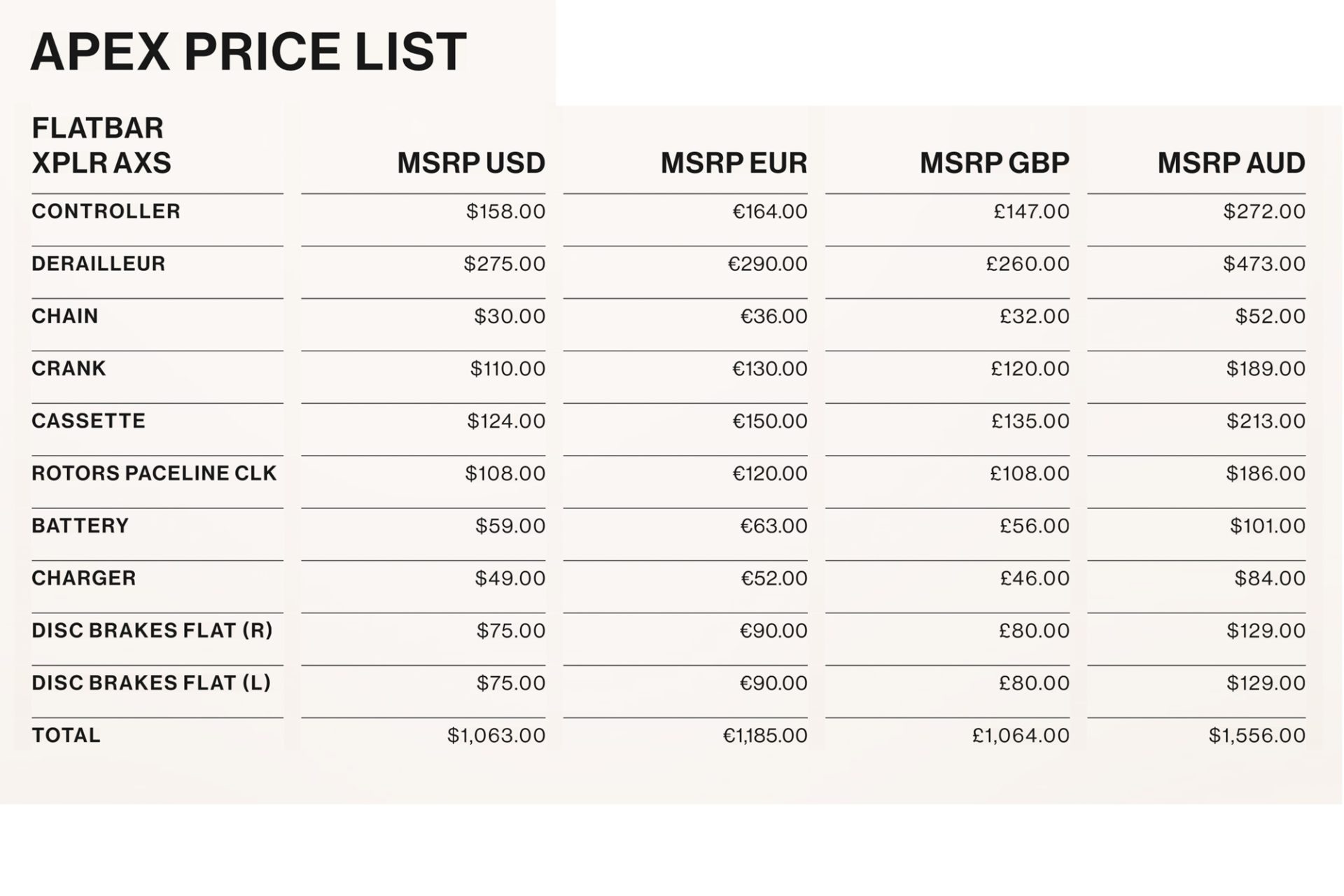


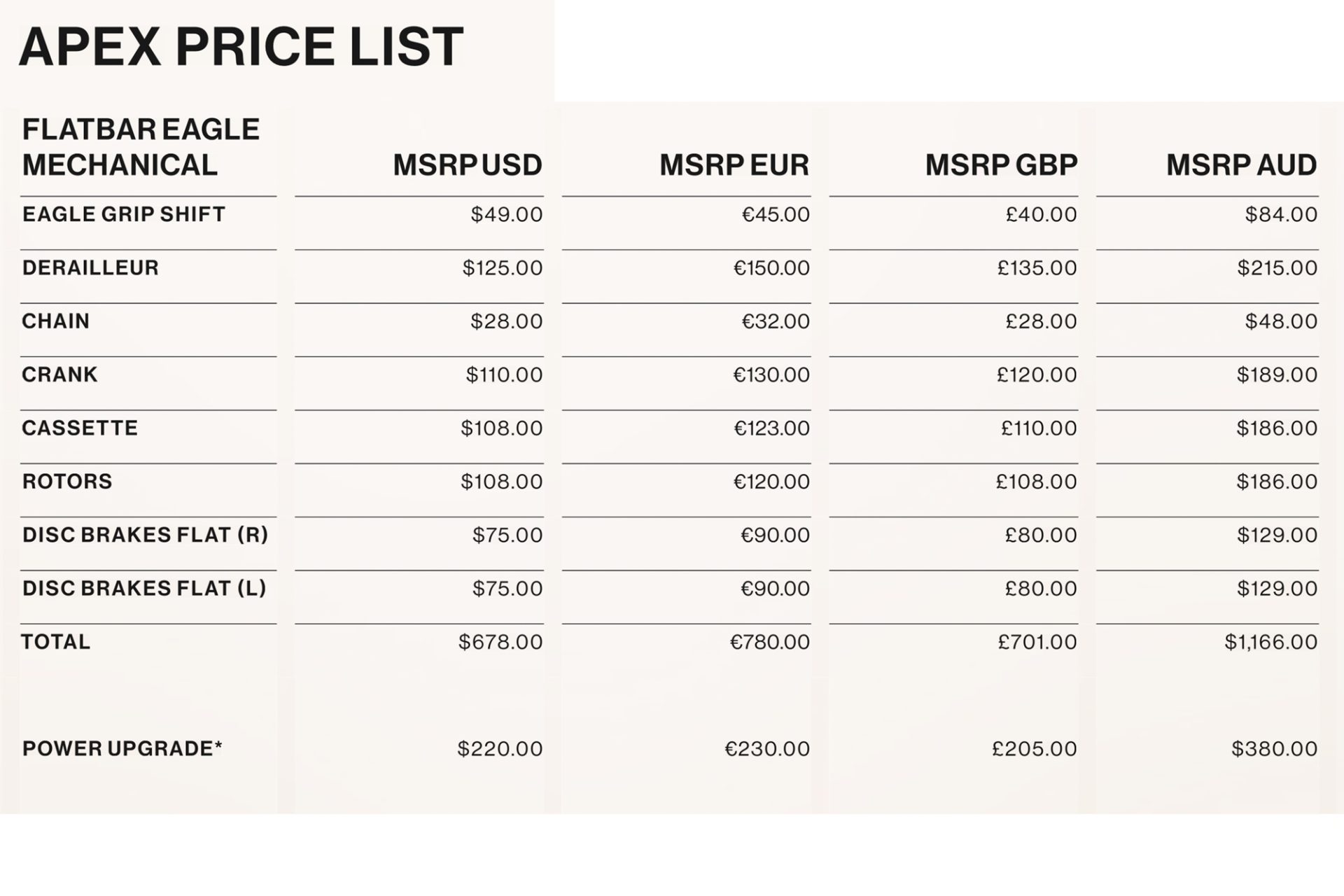
Did we do a good job with this story?

